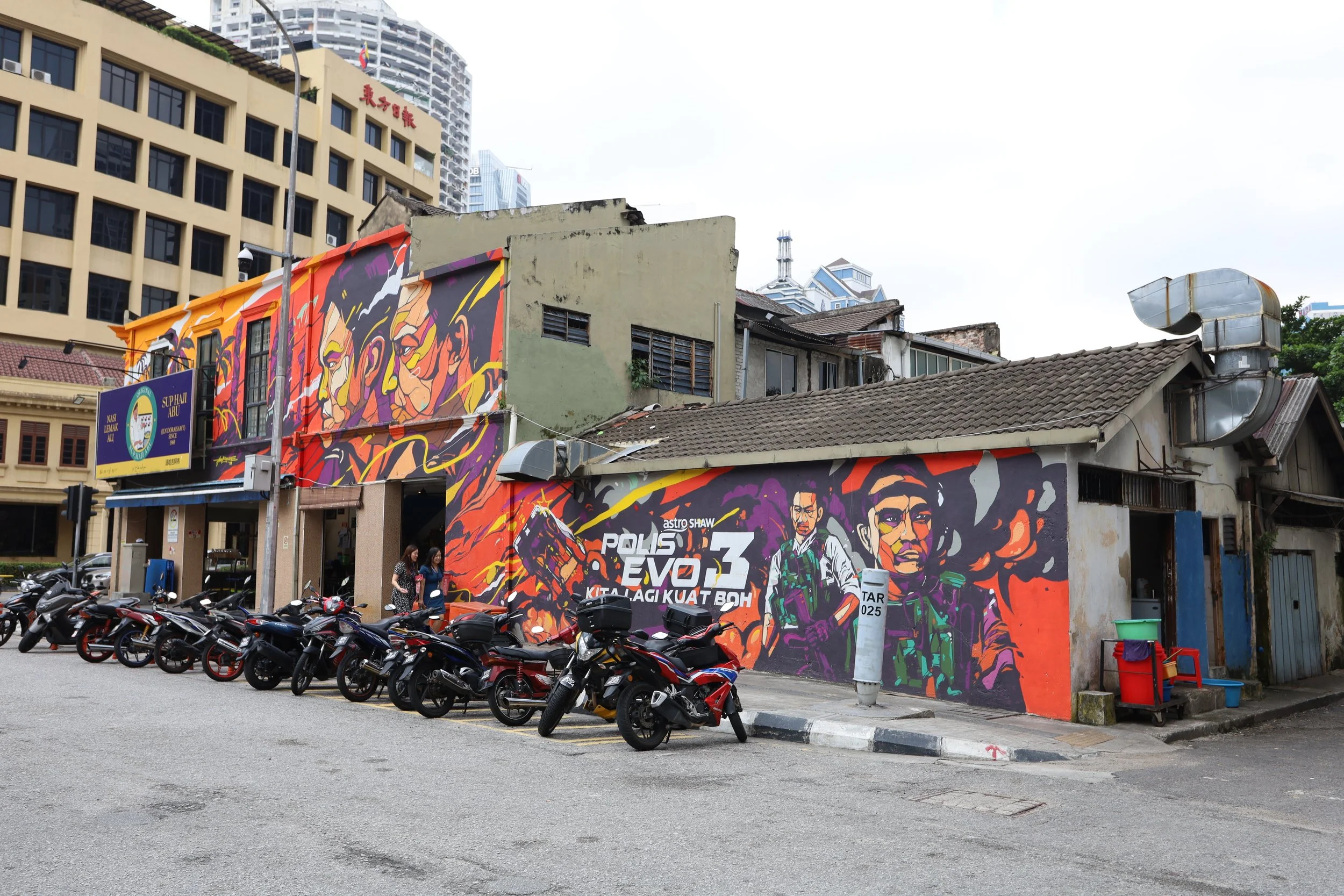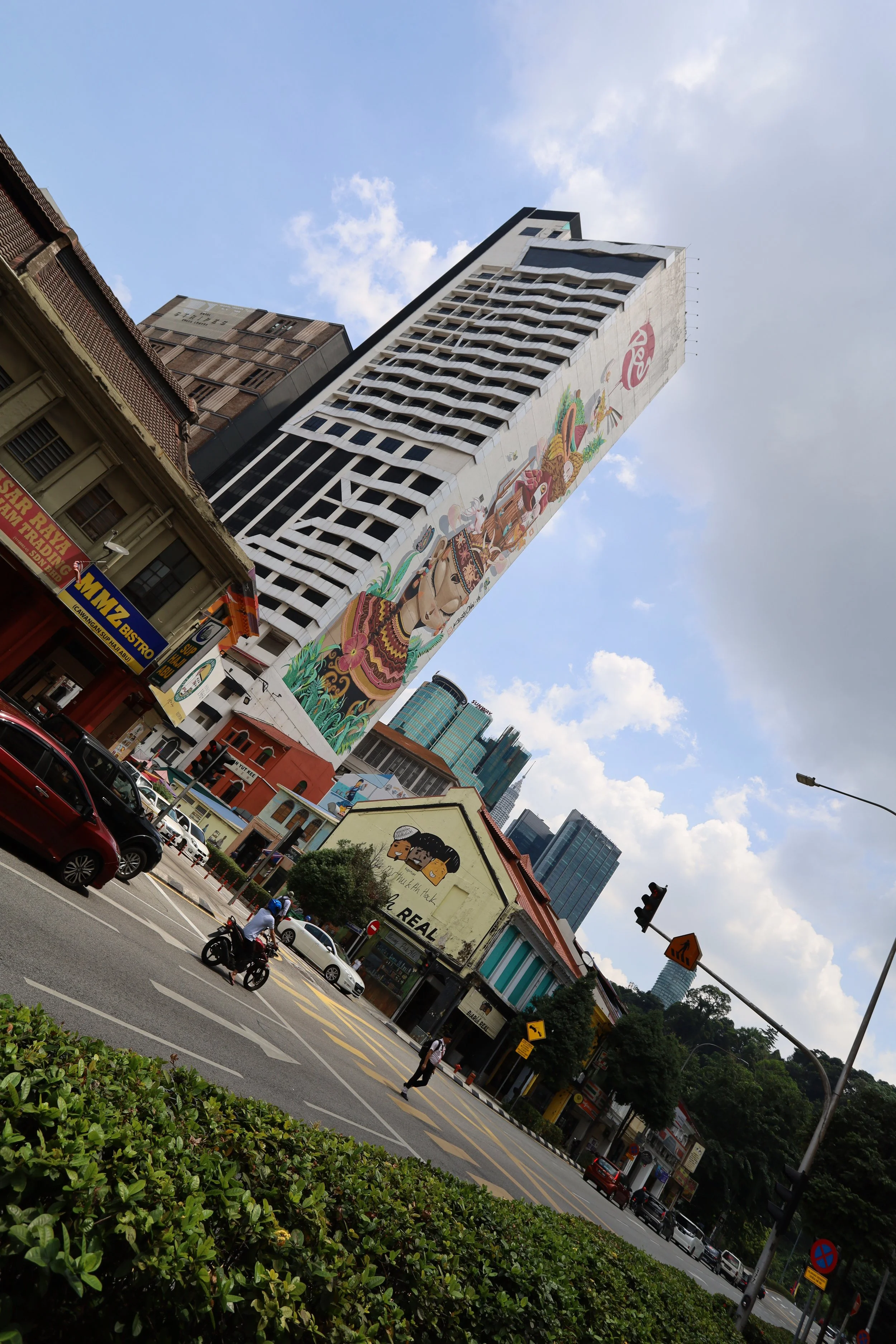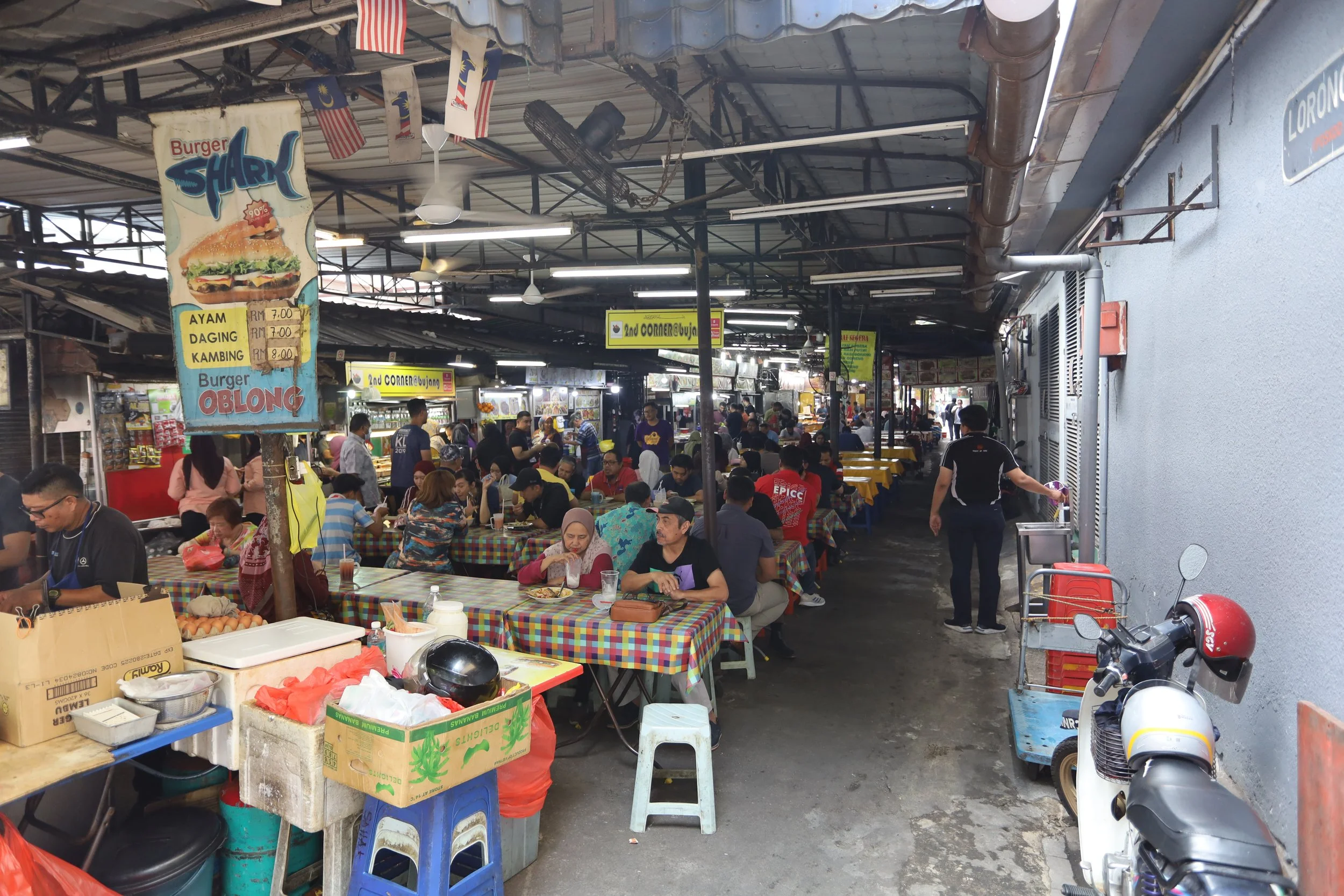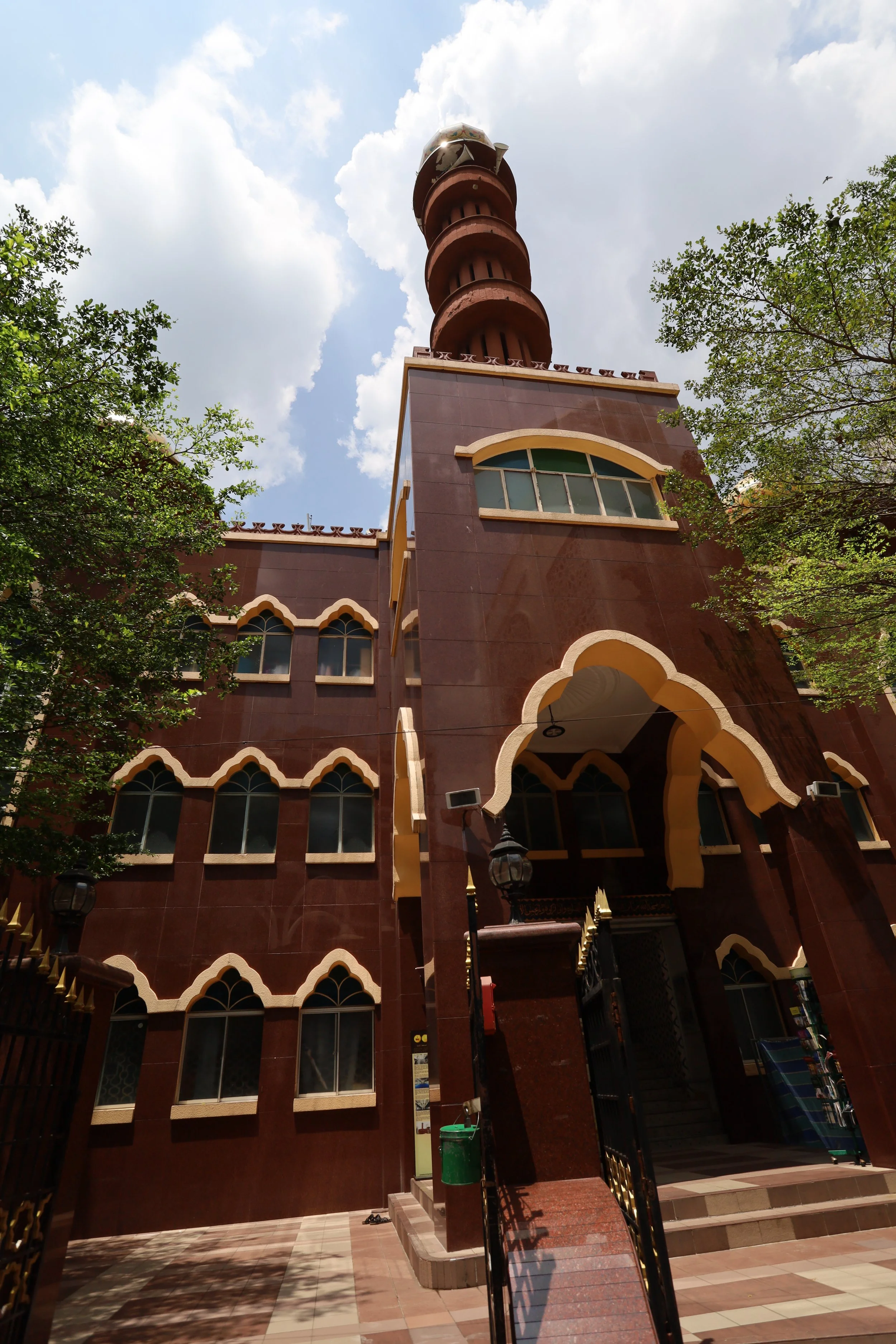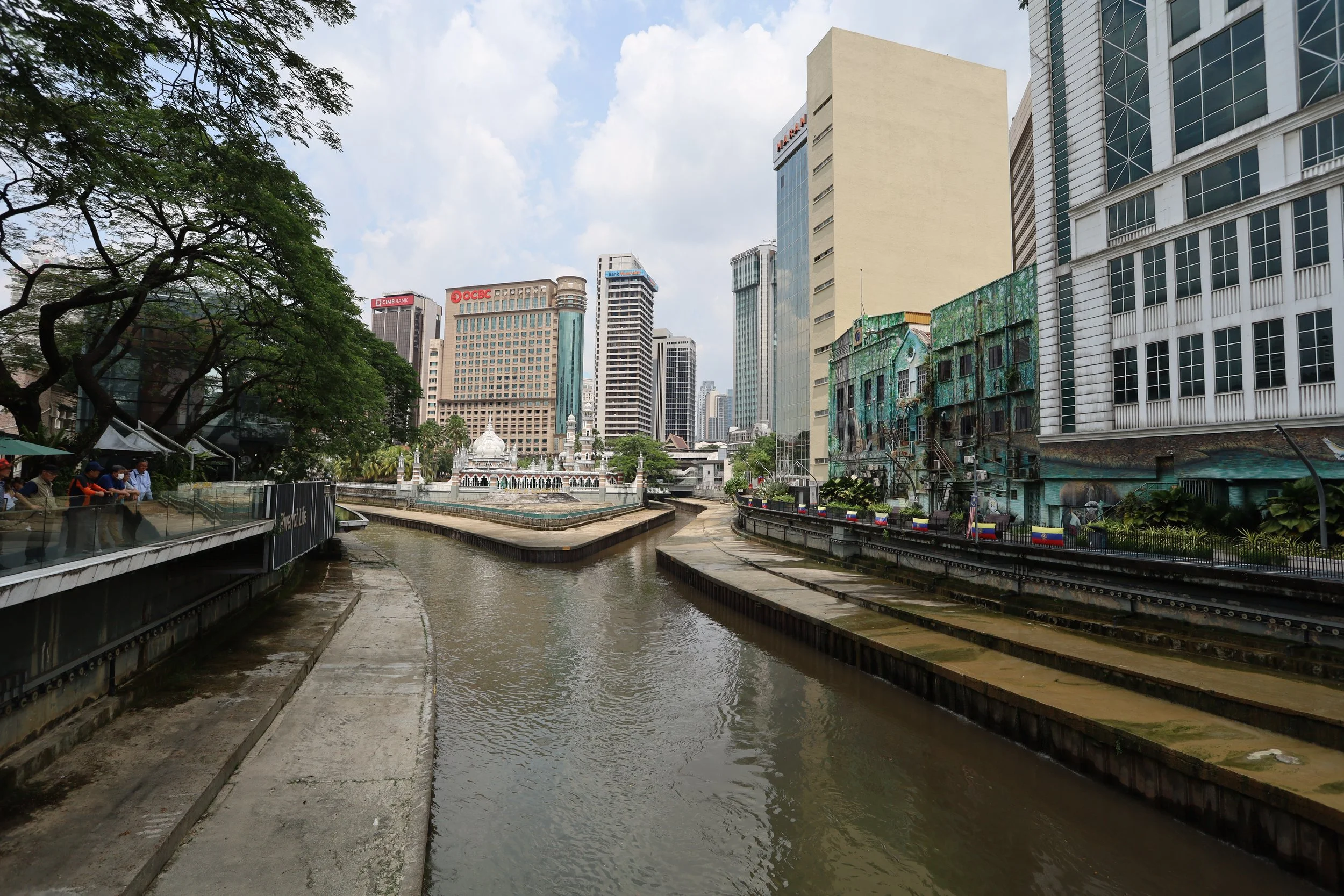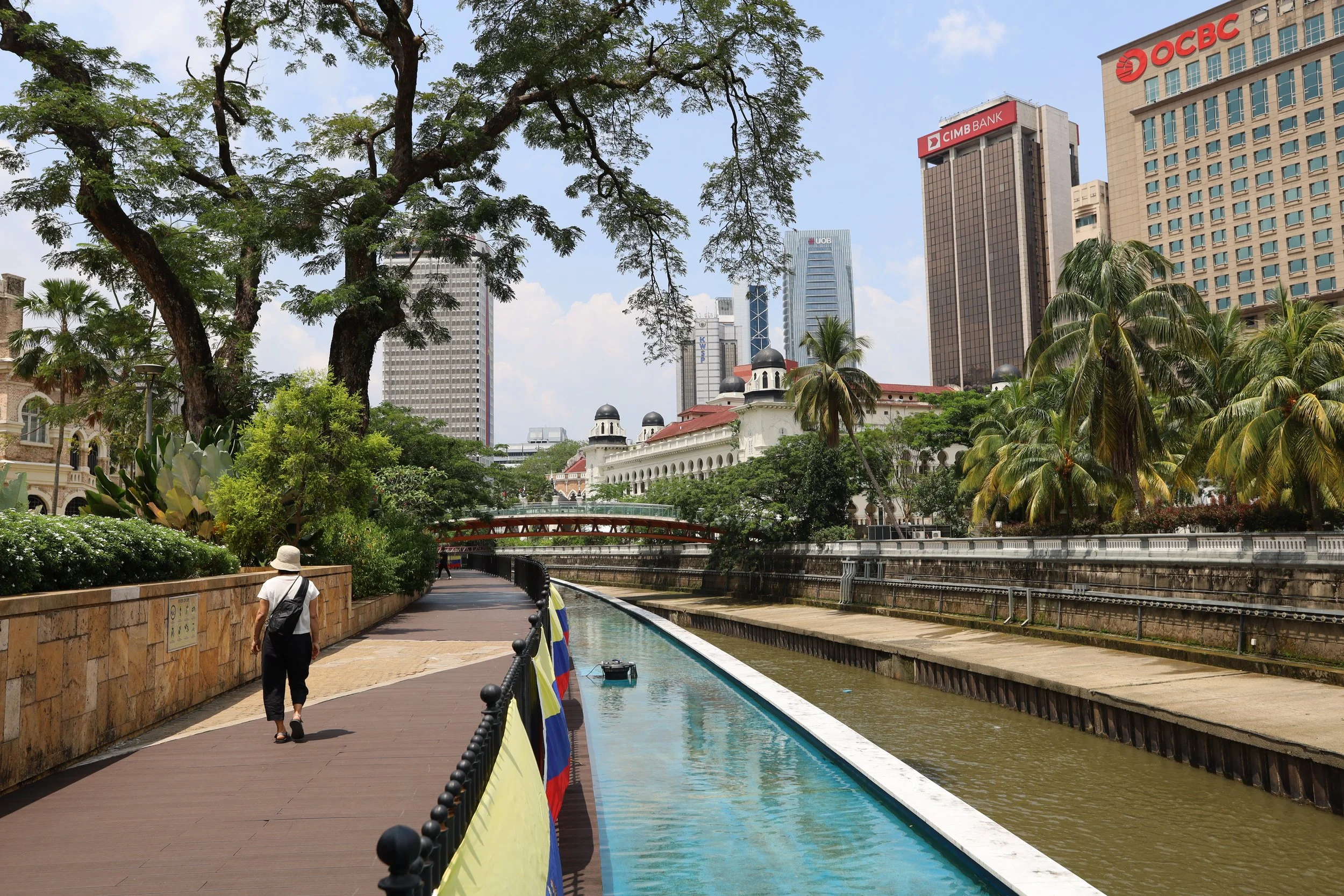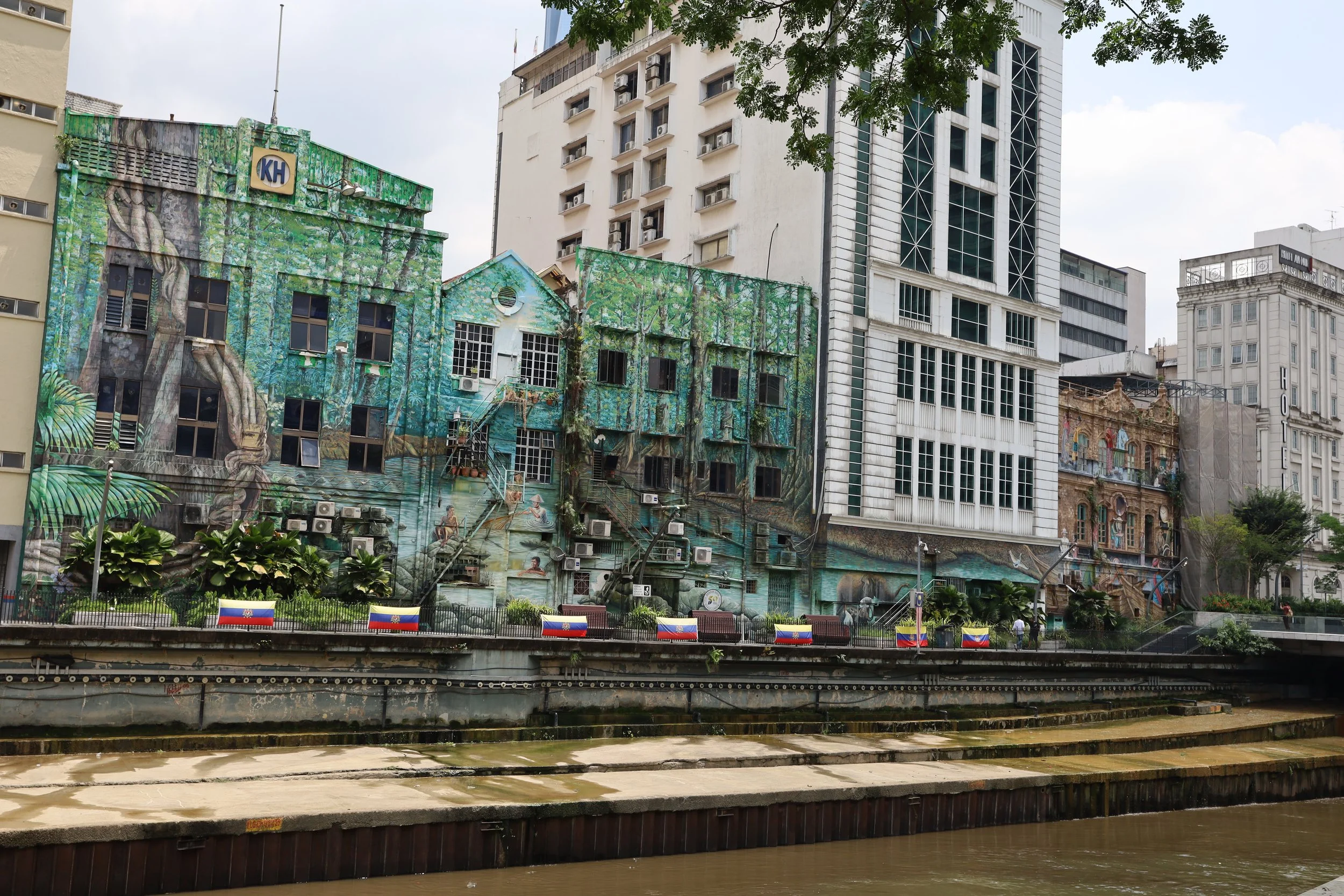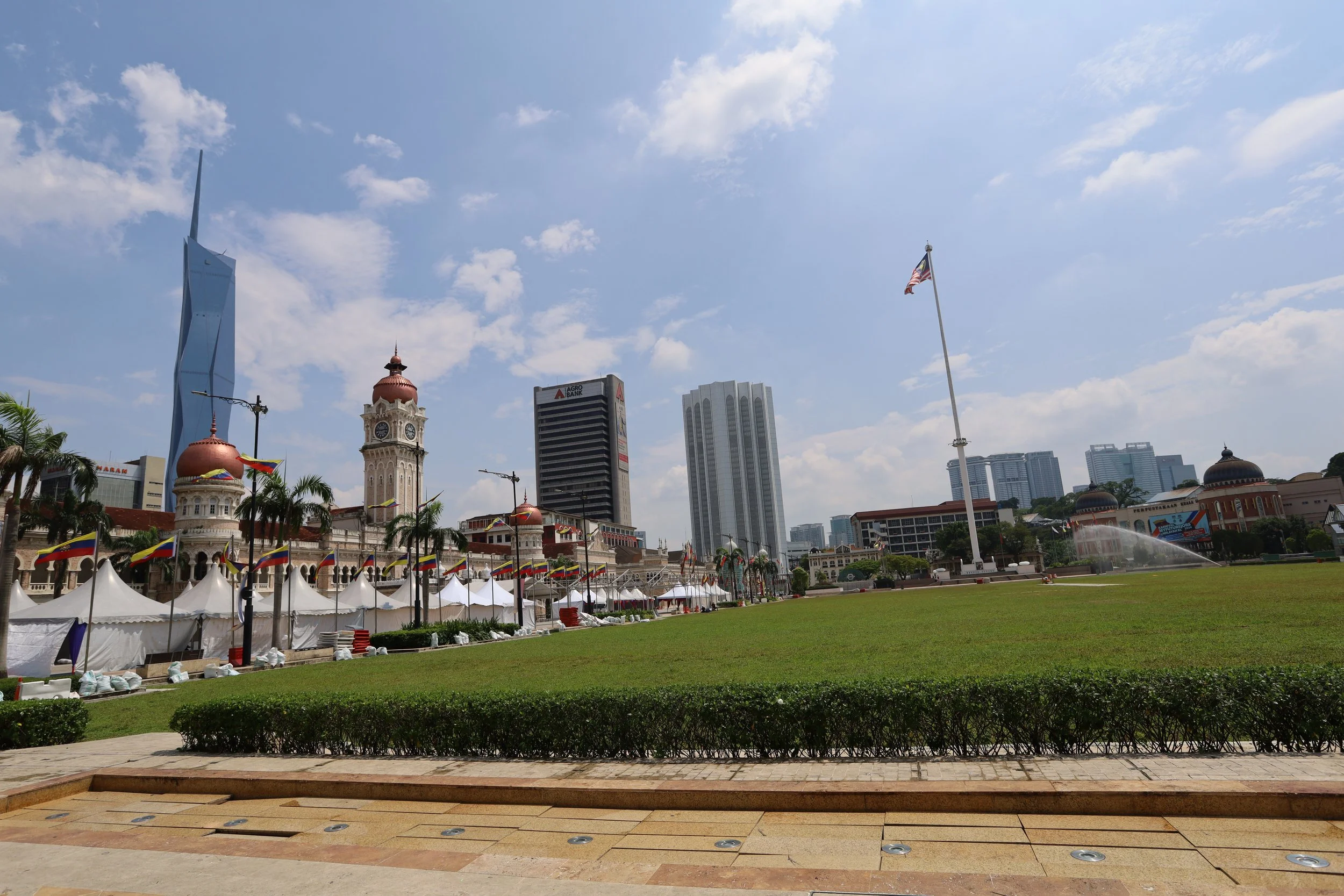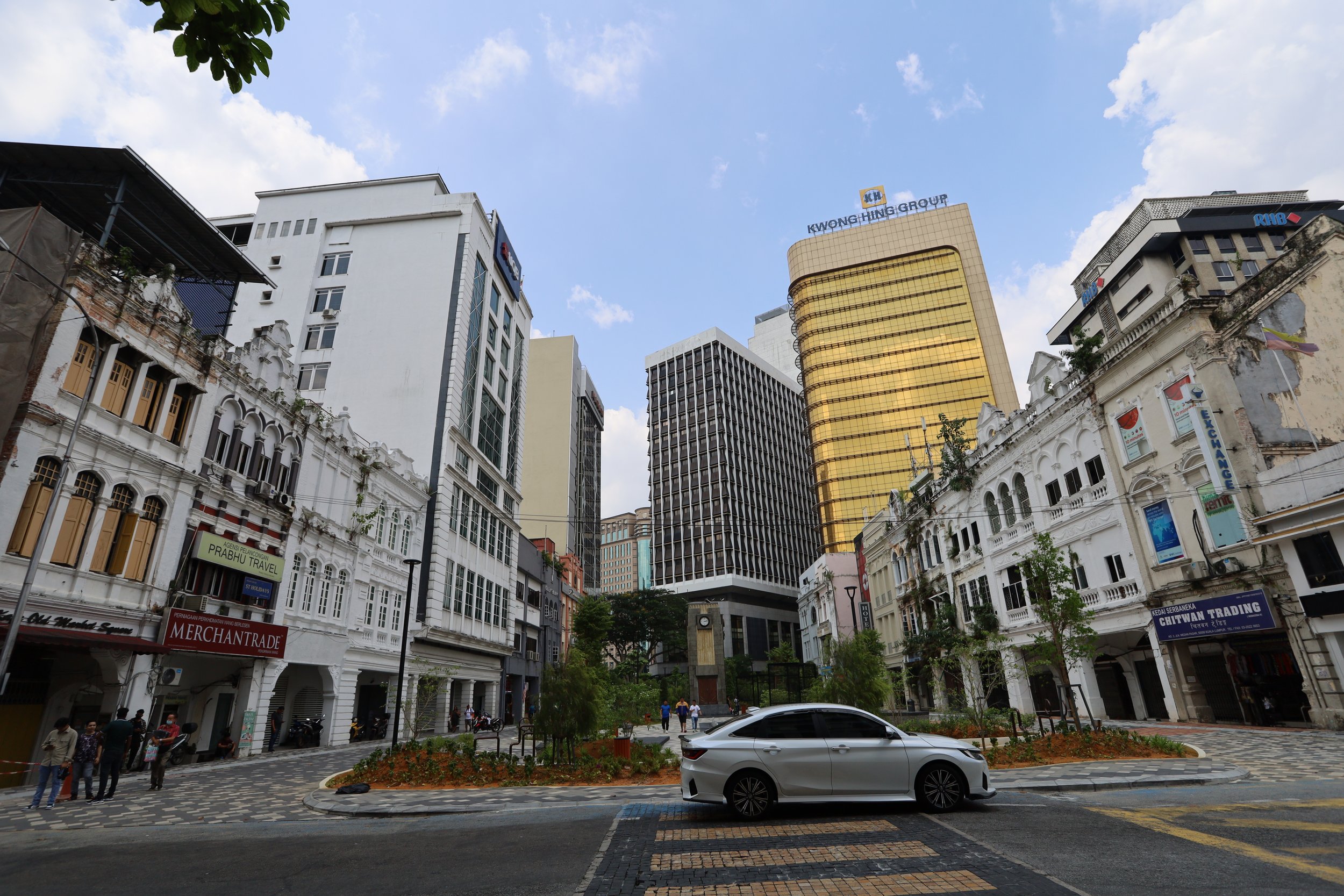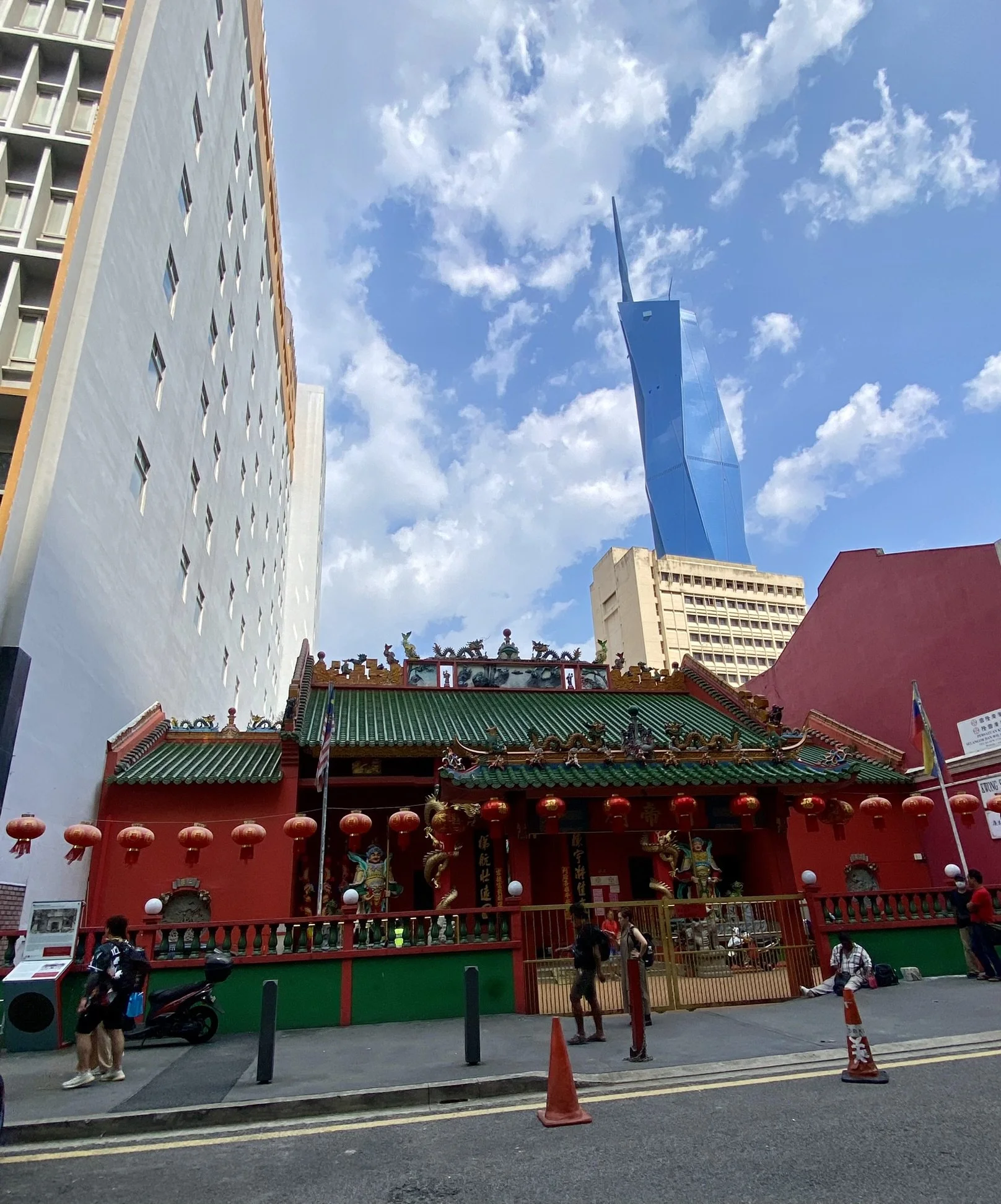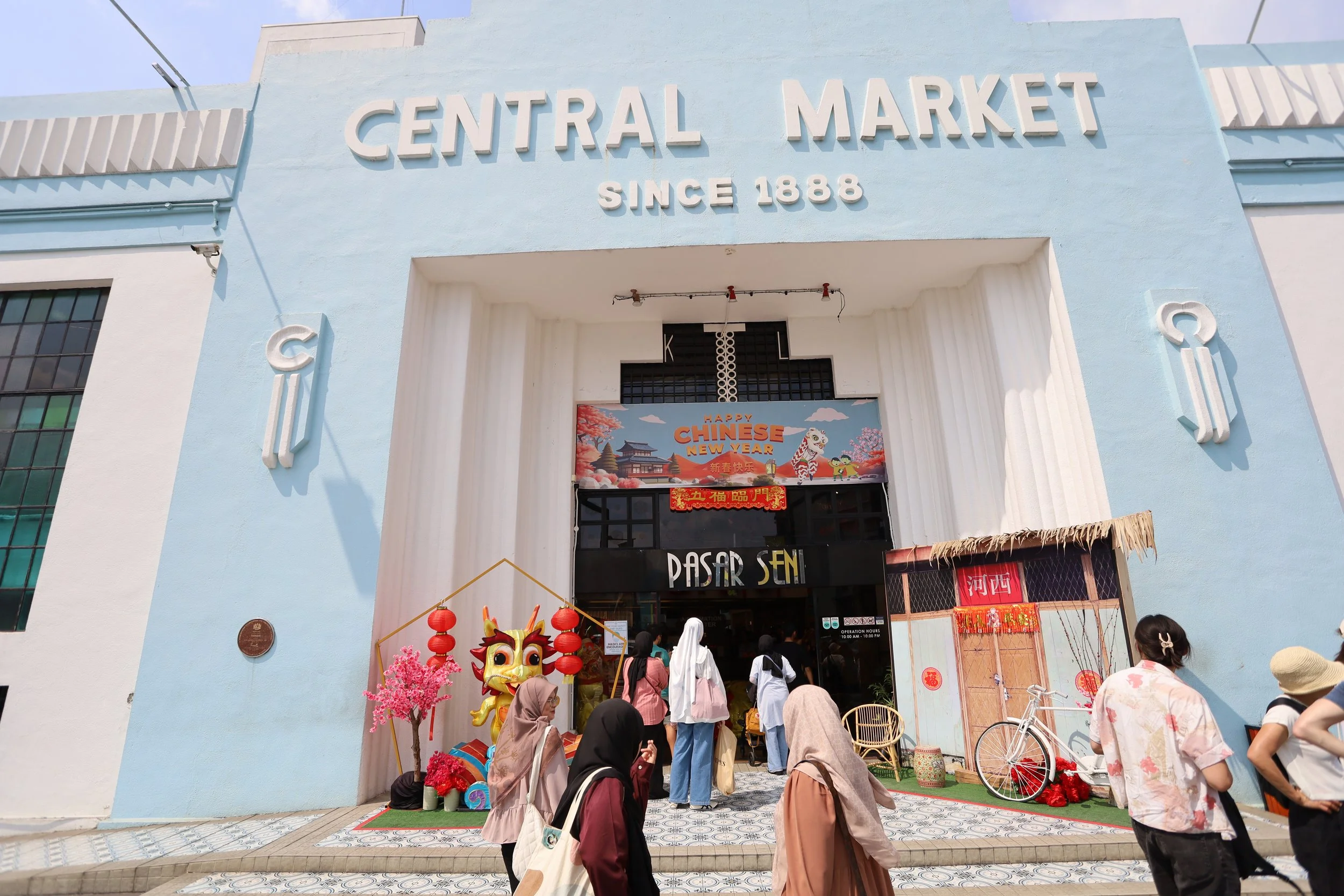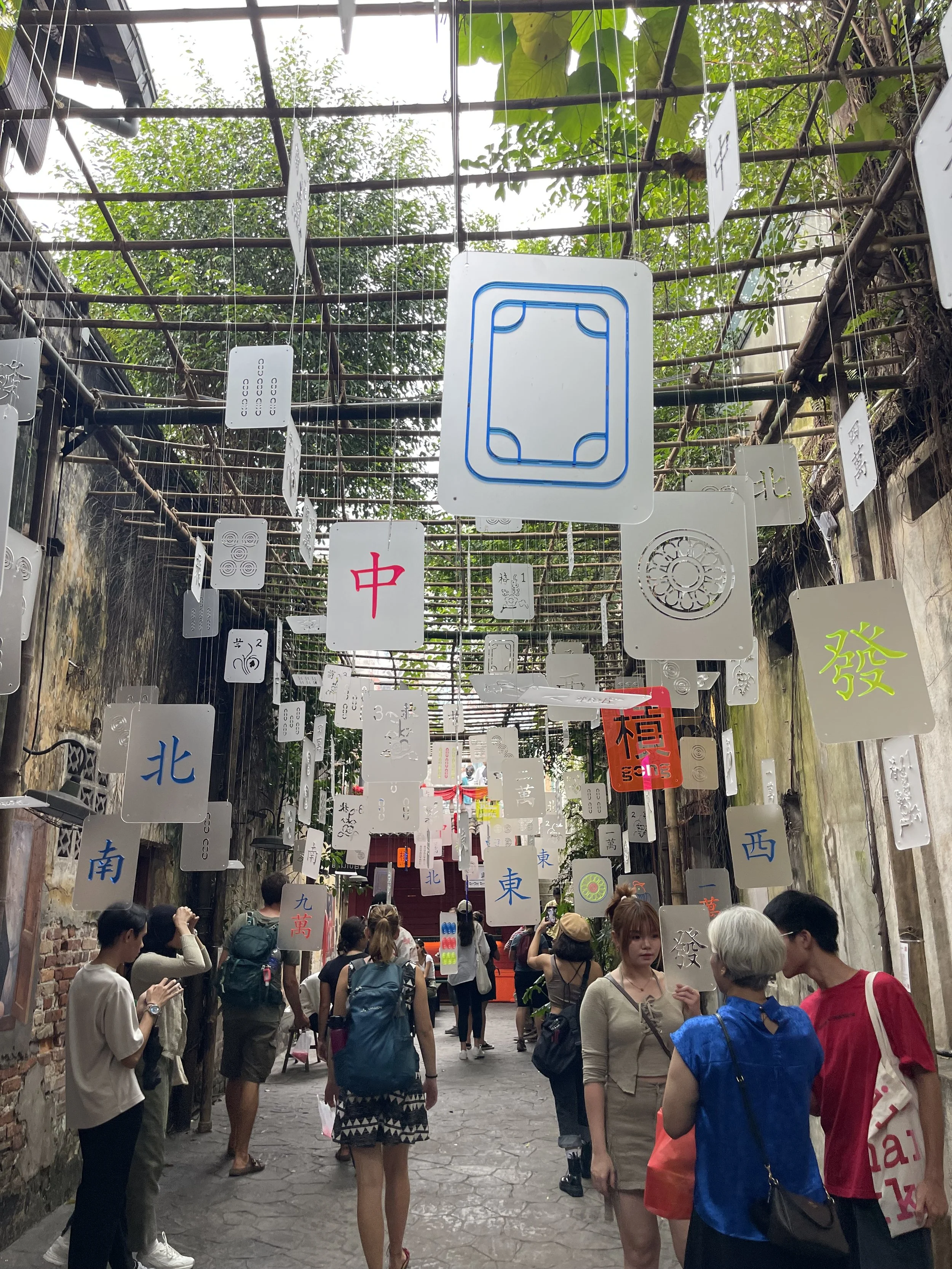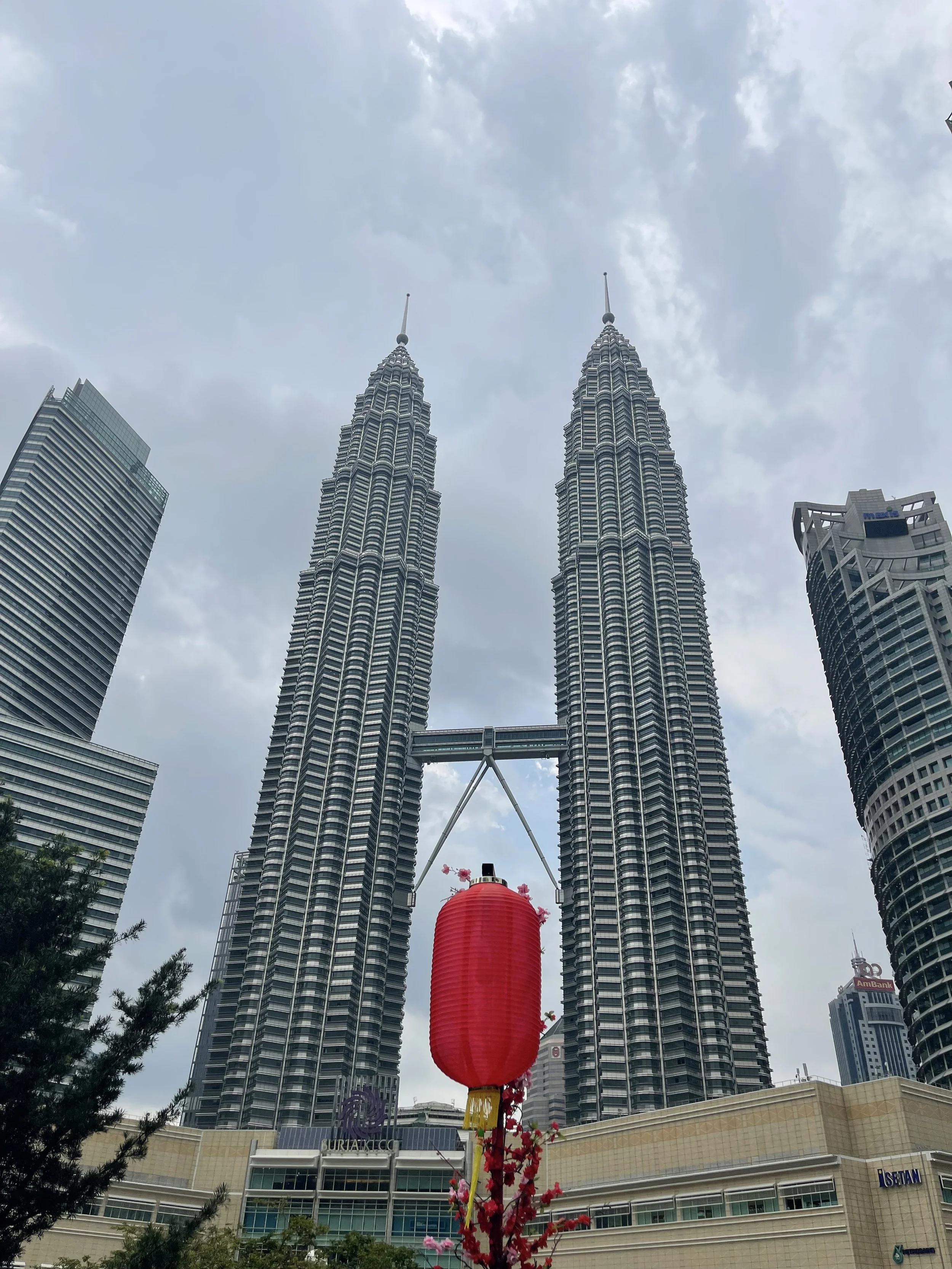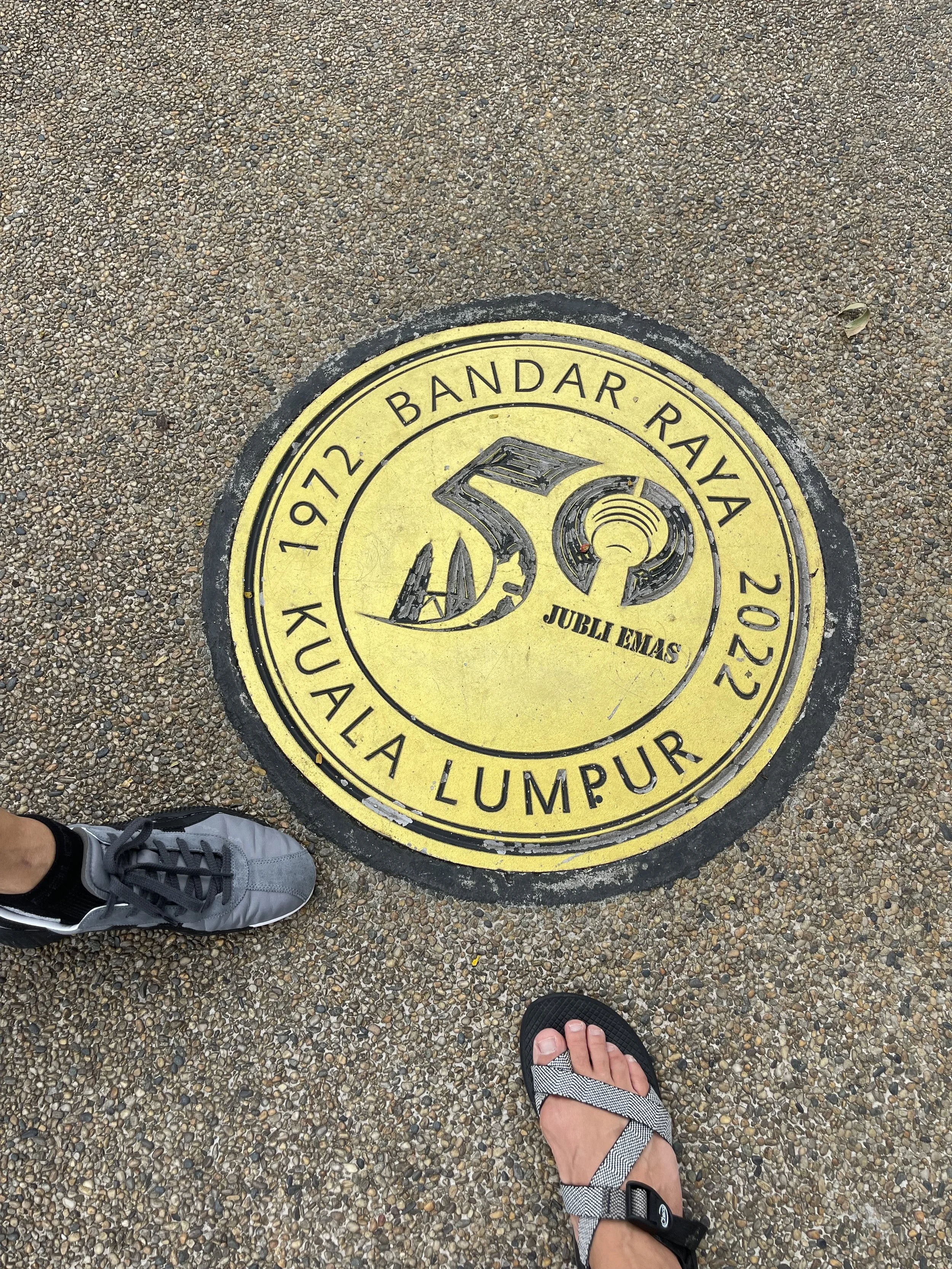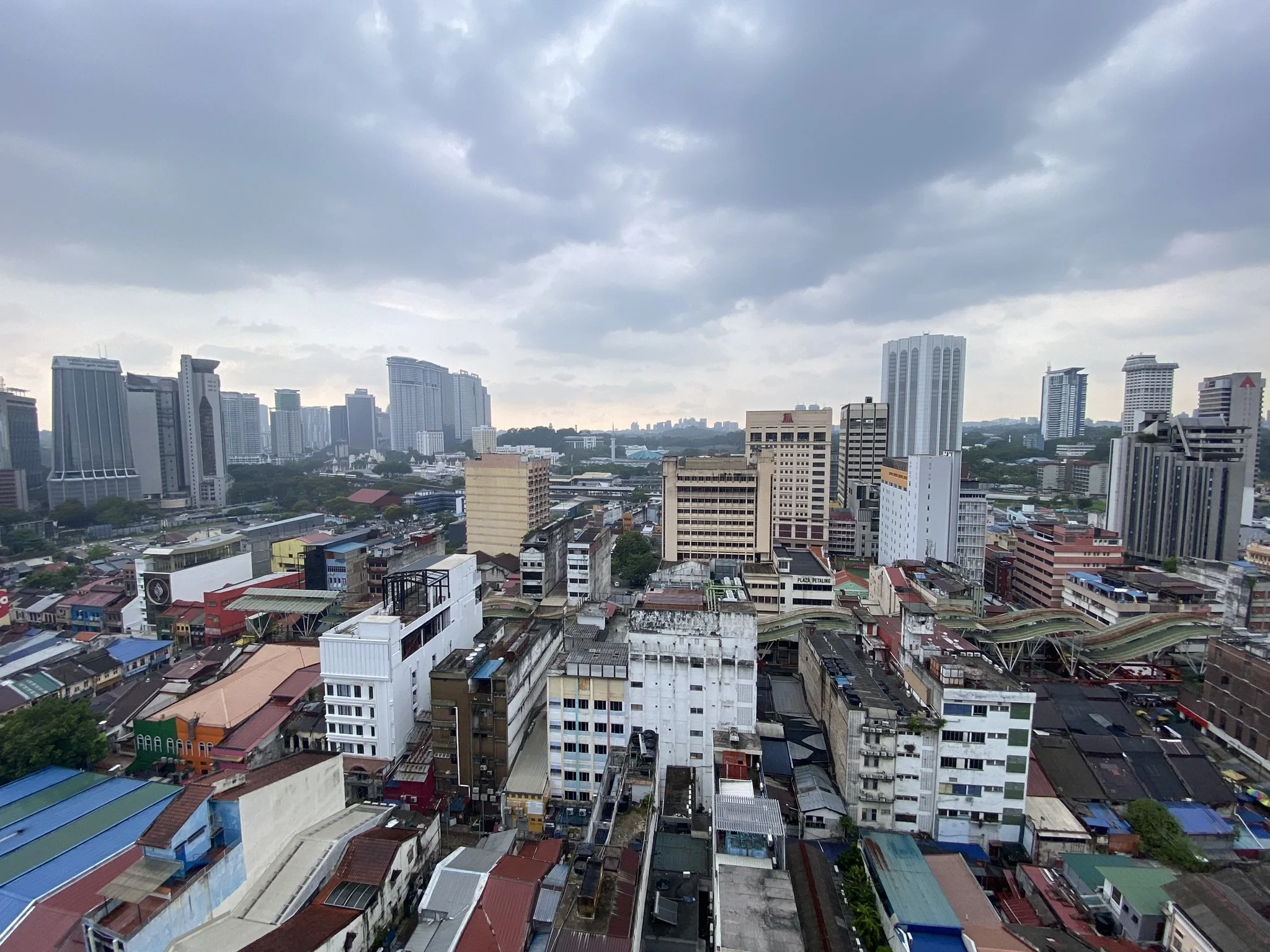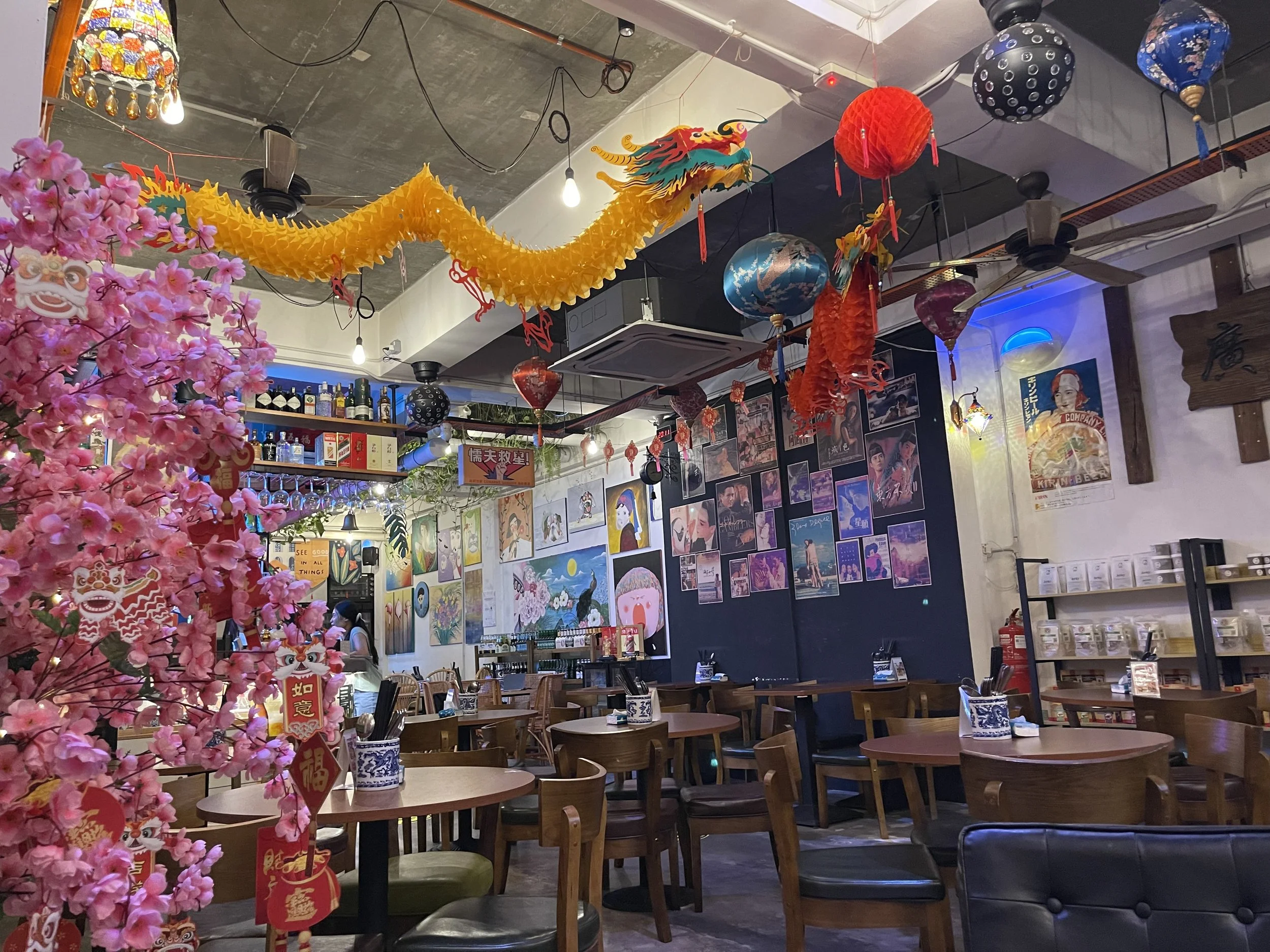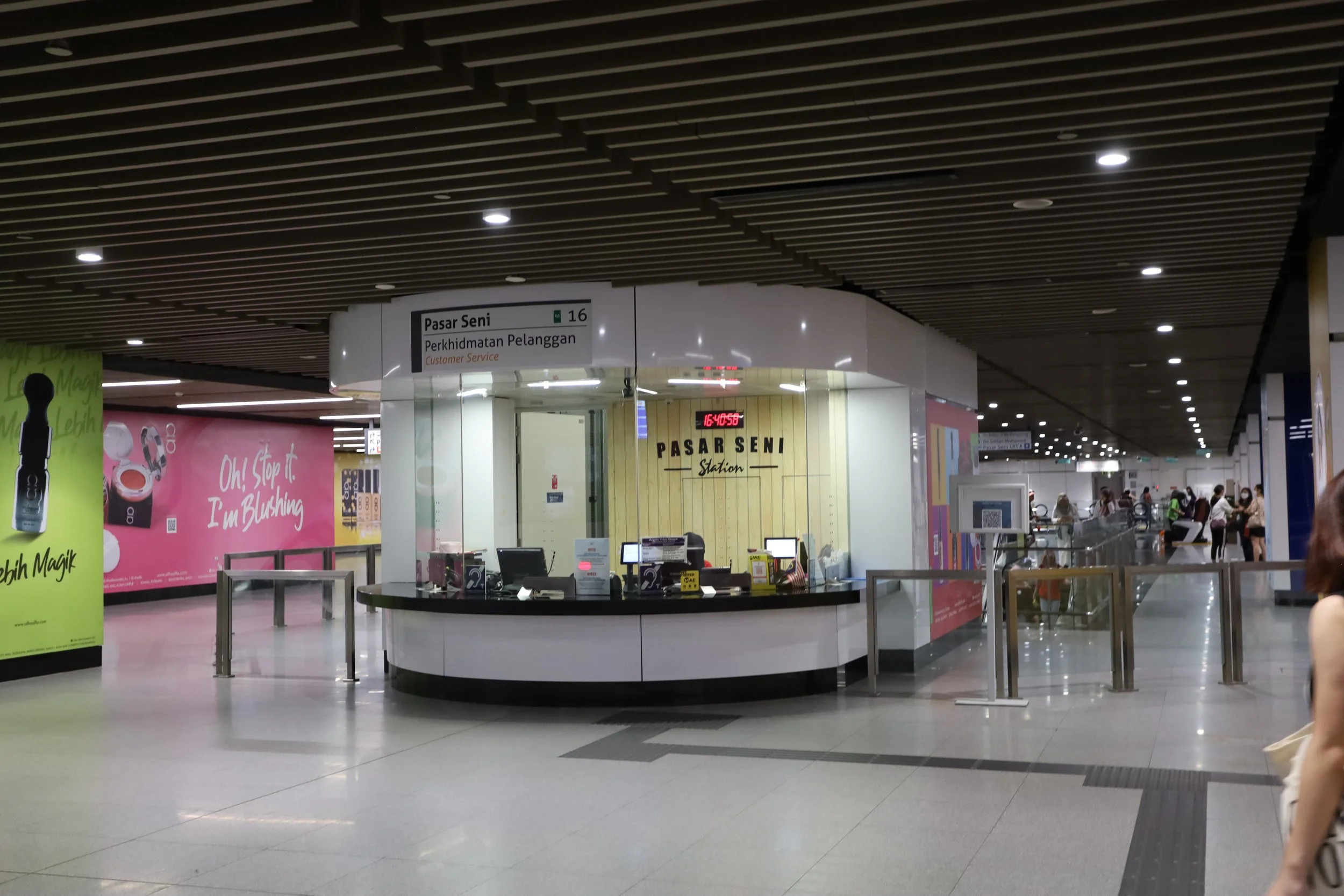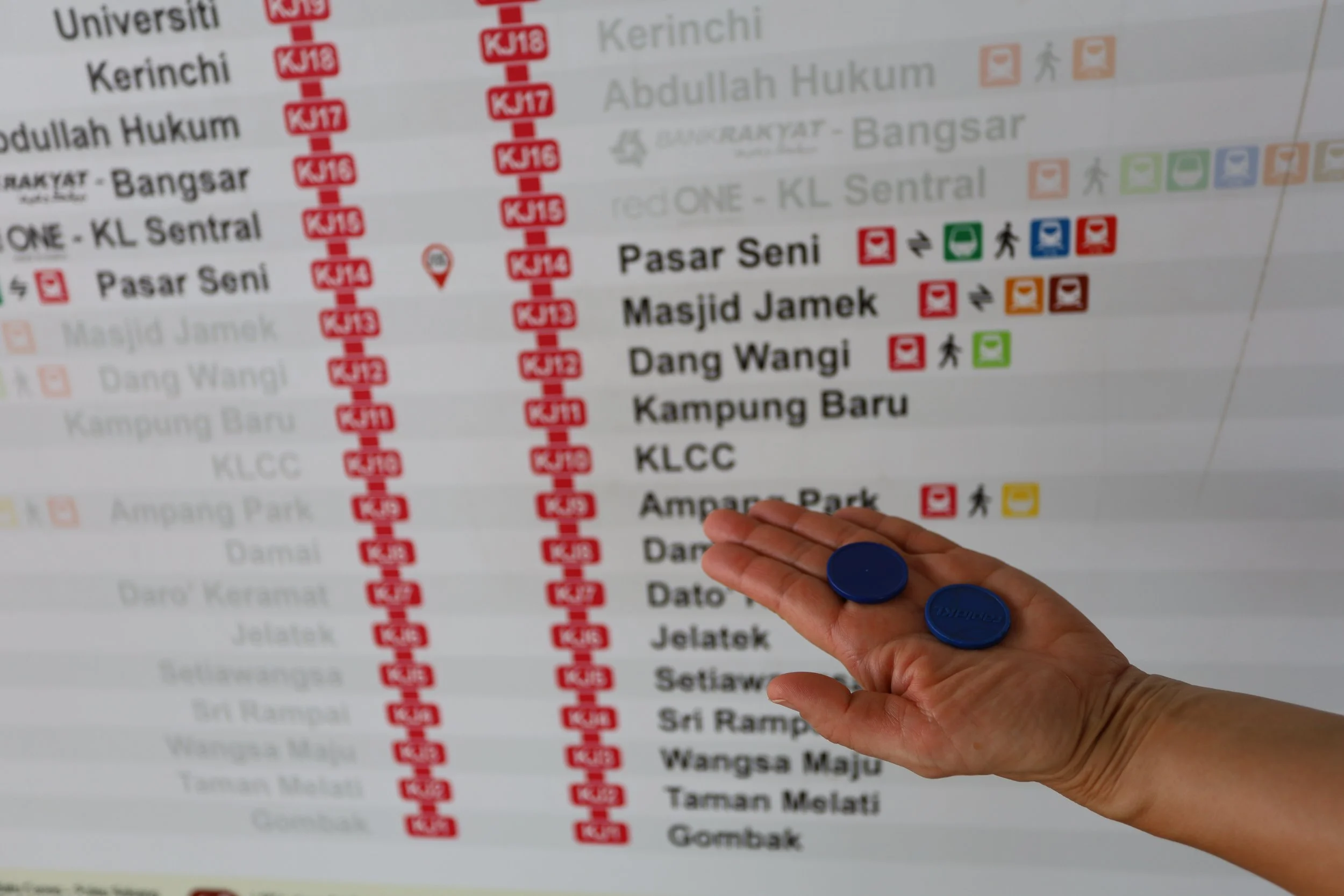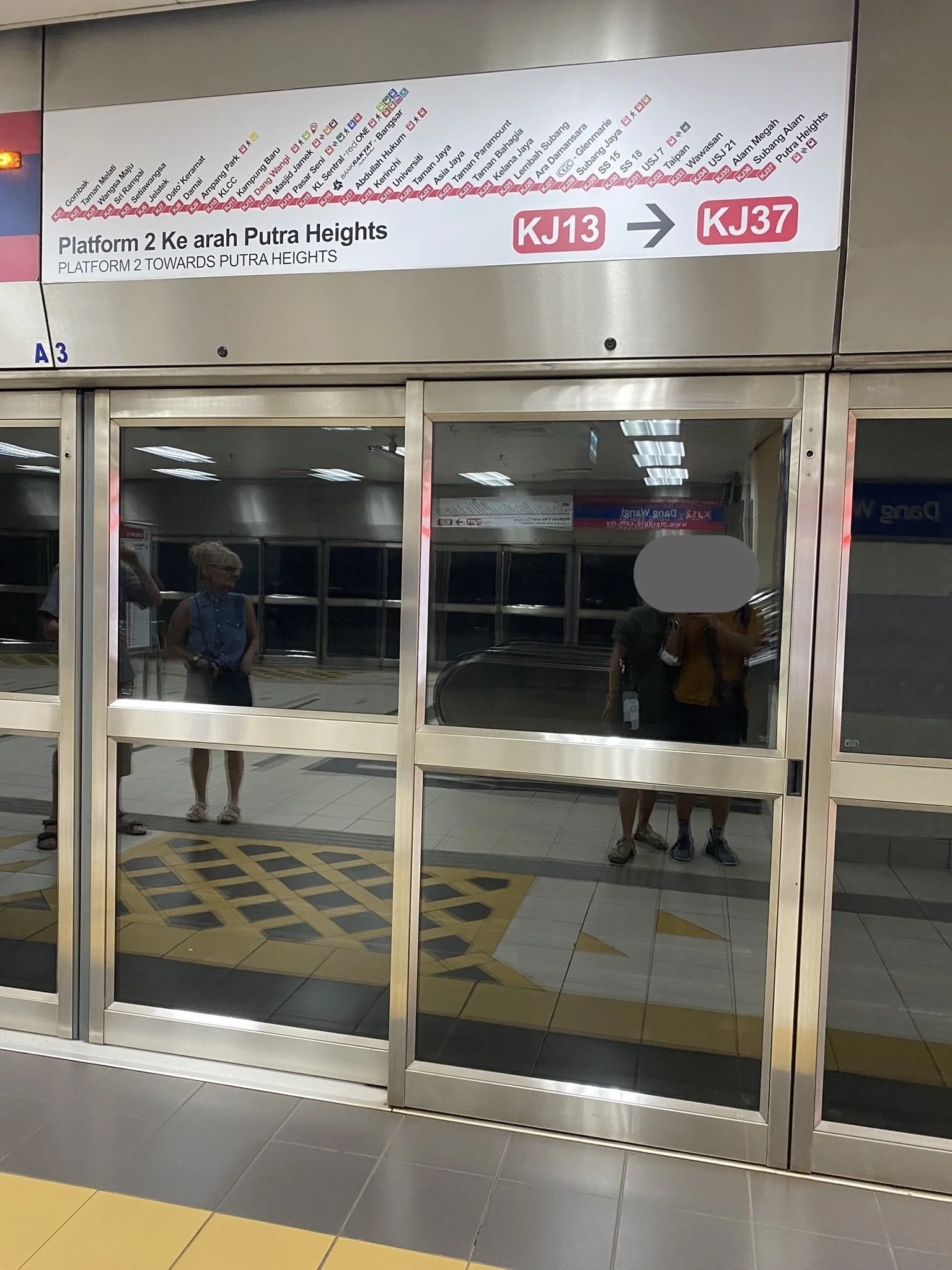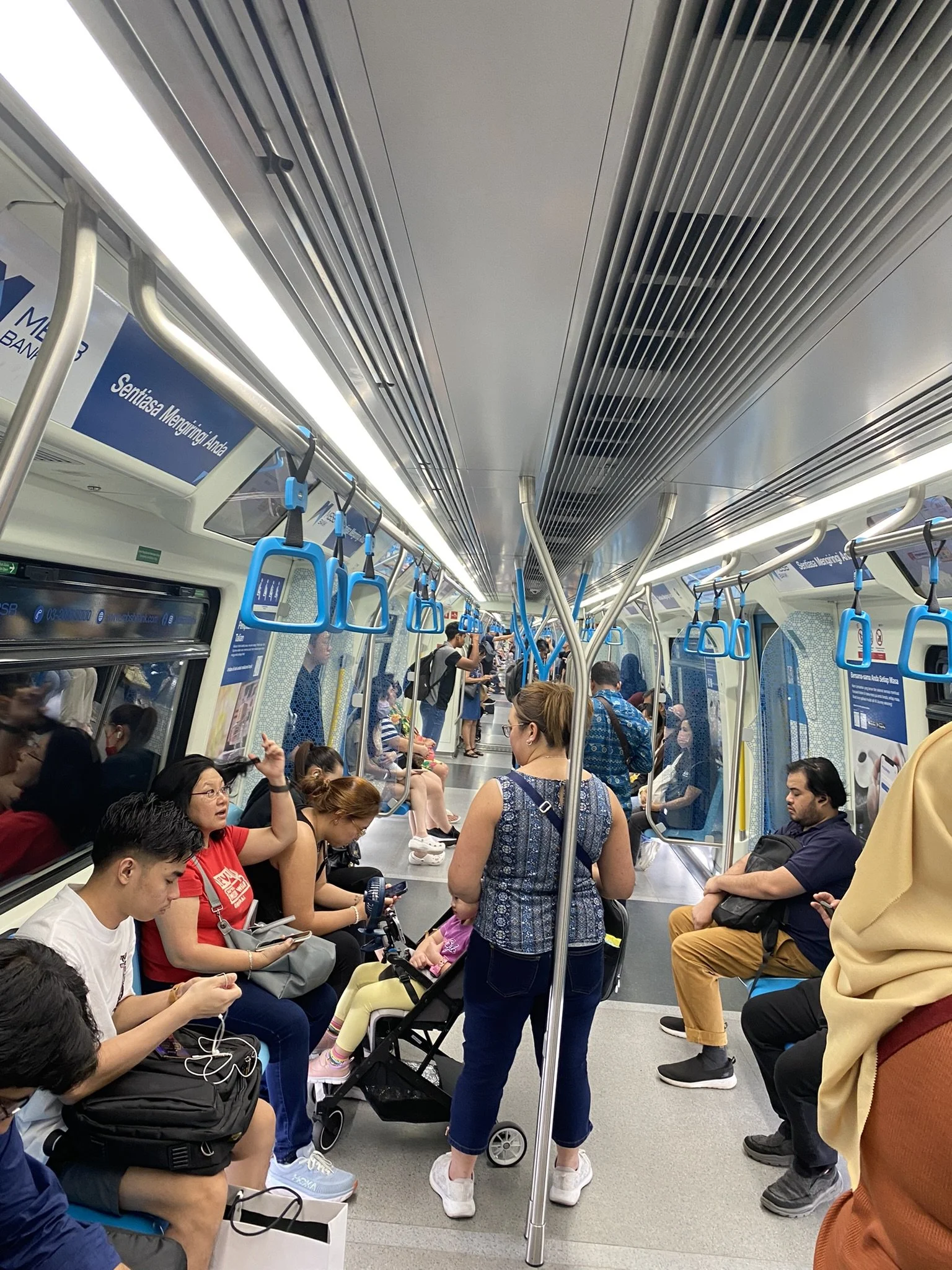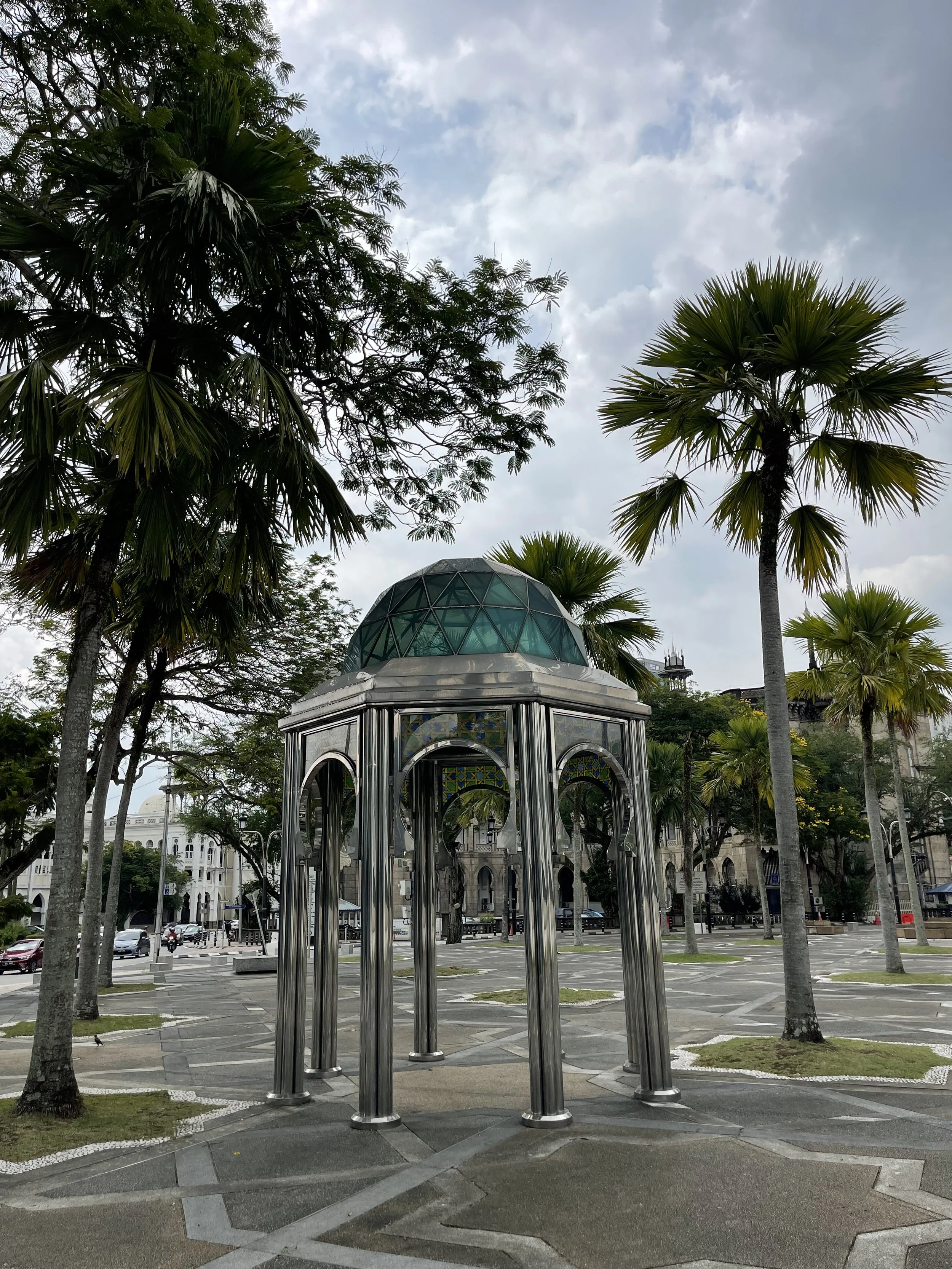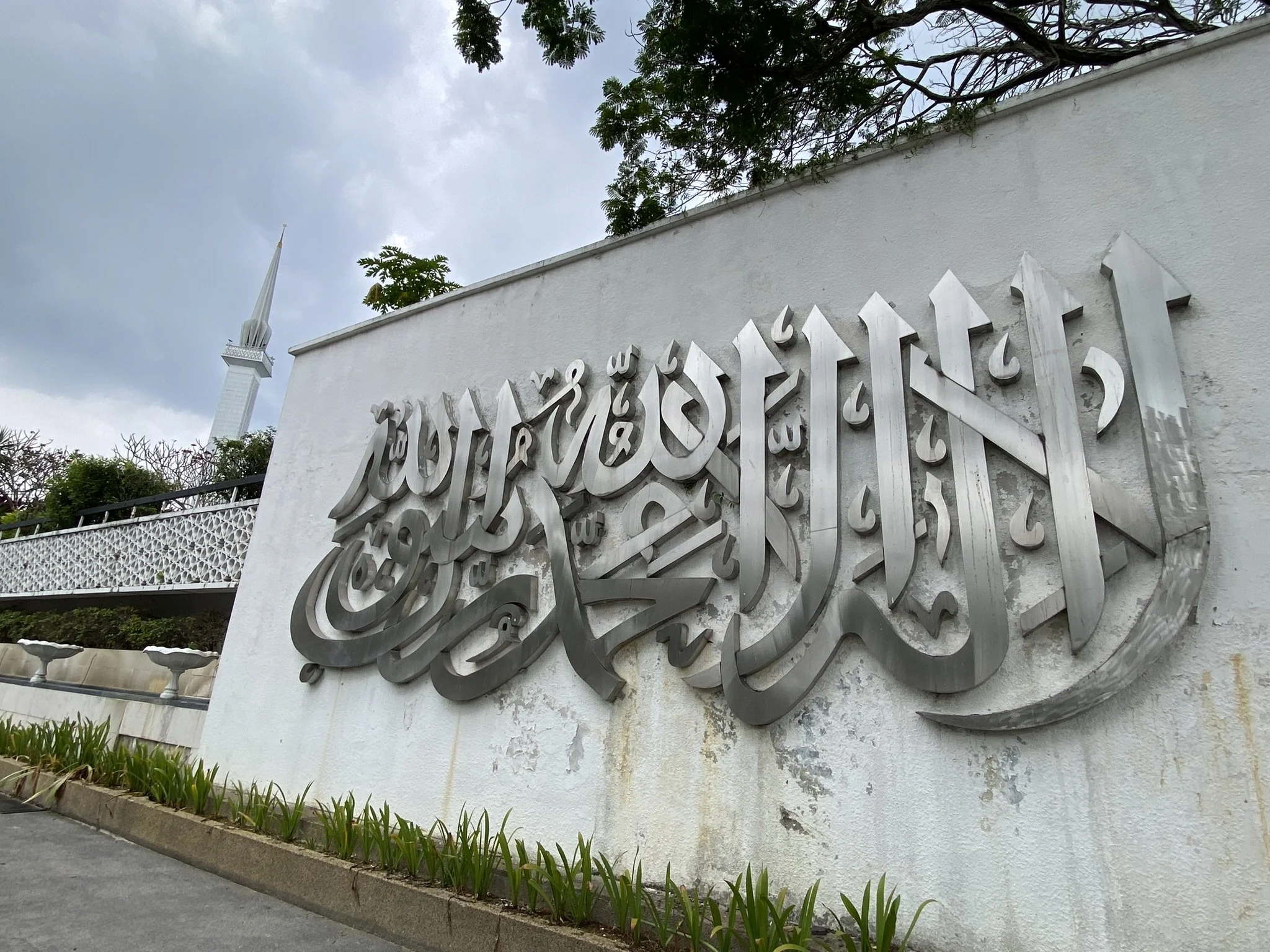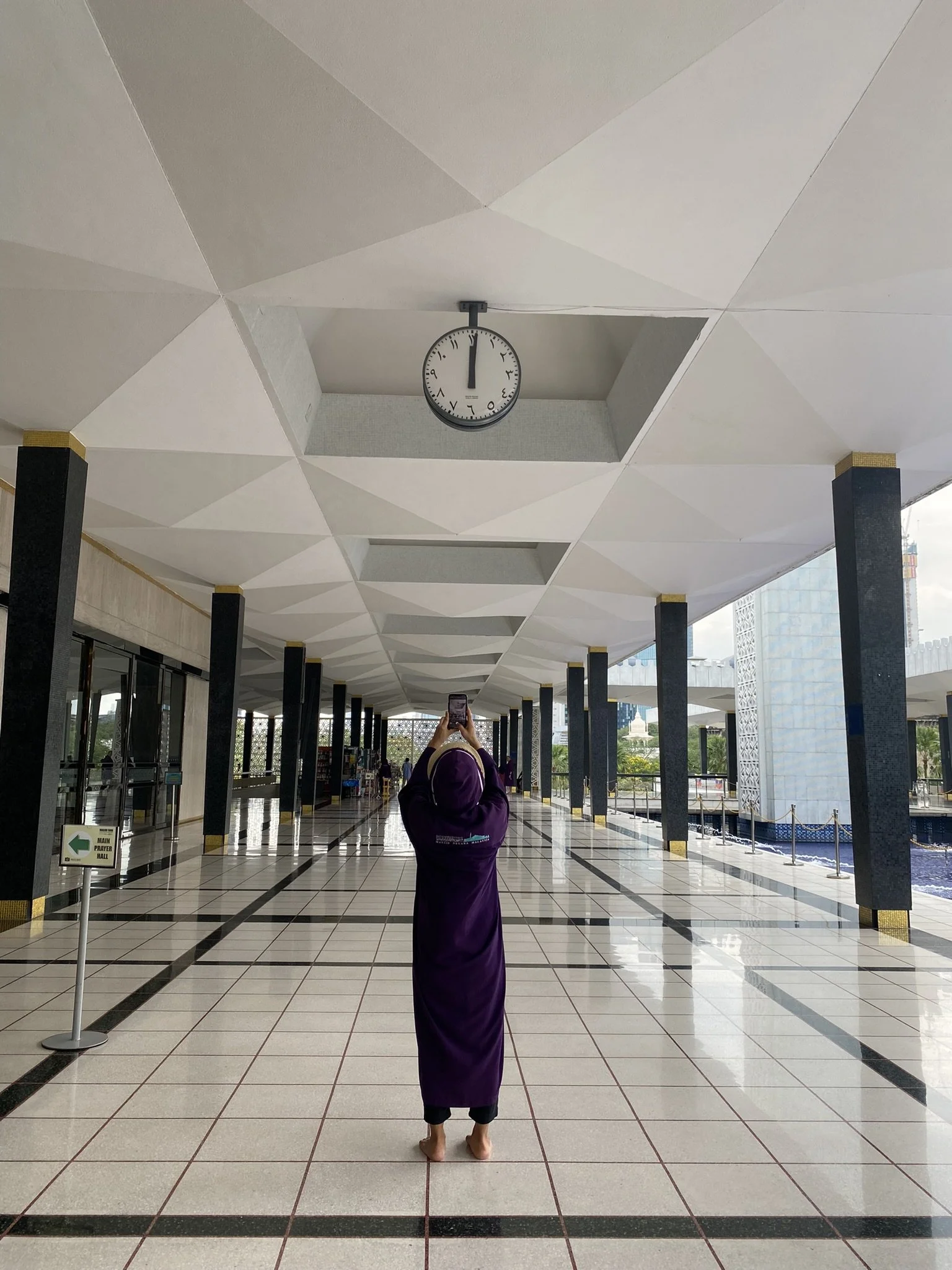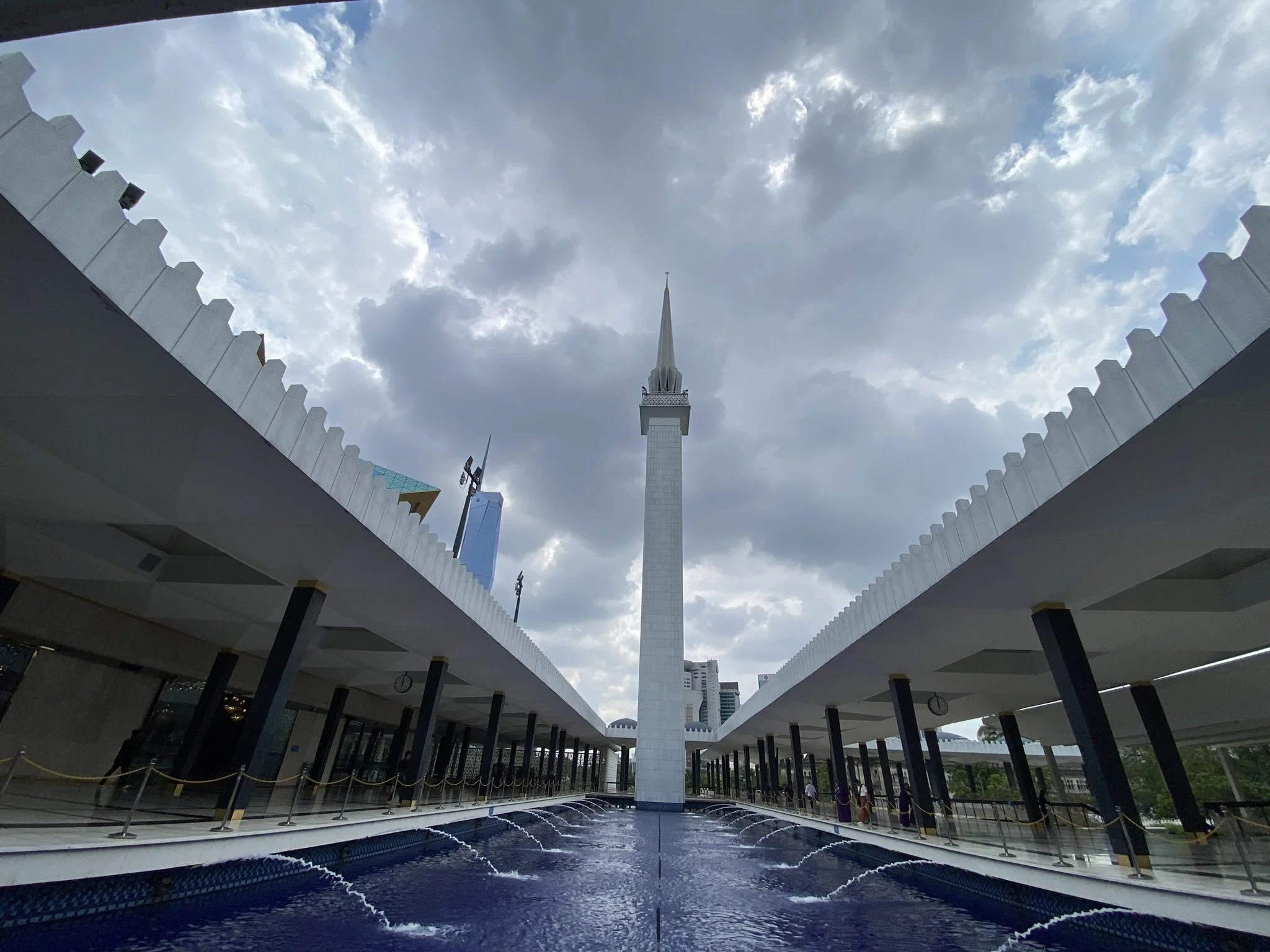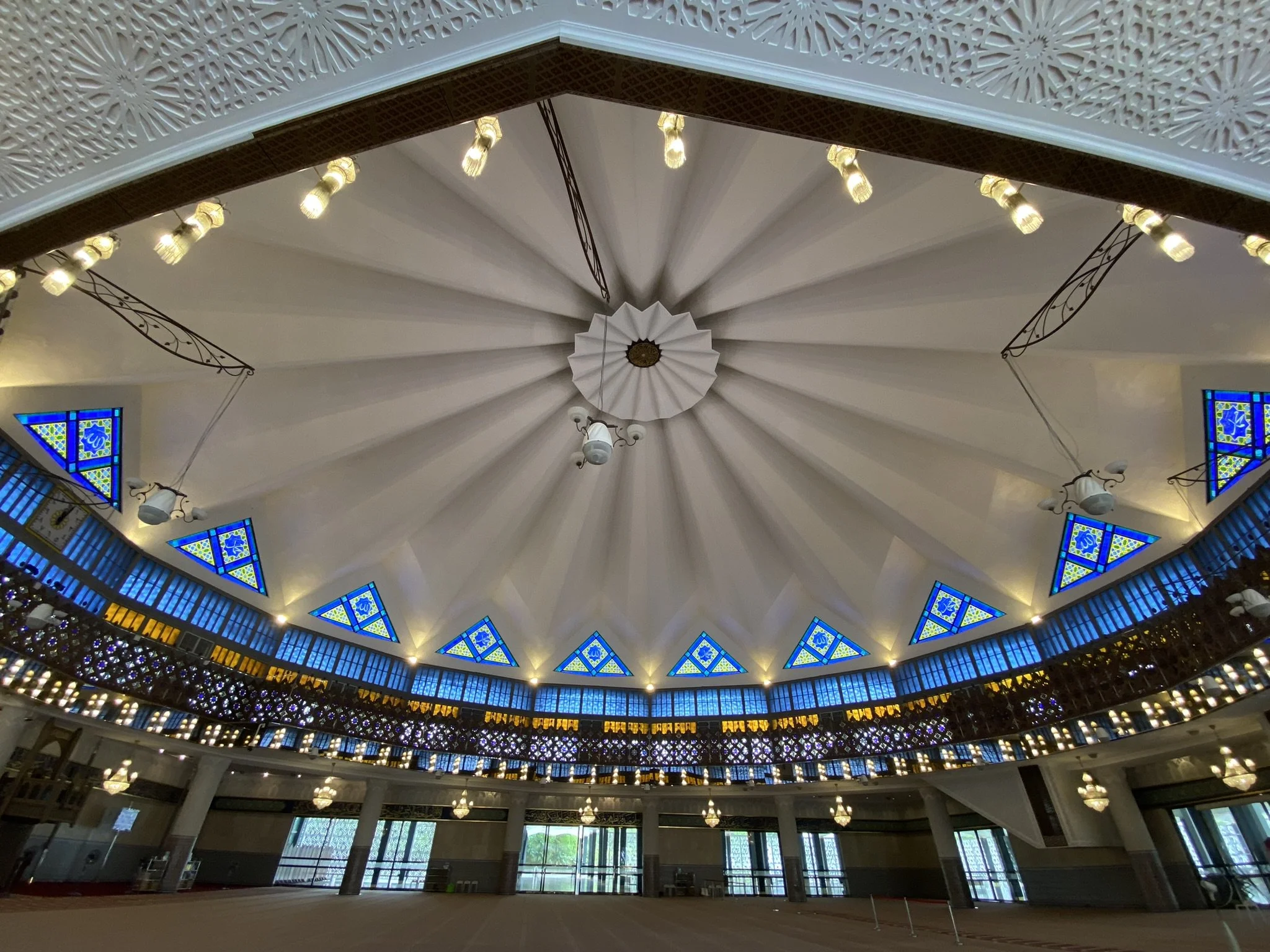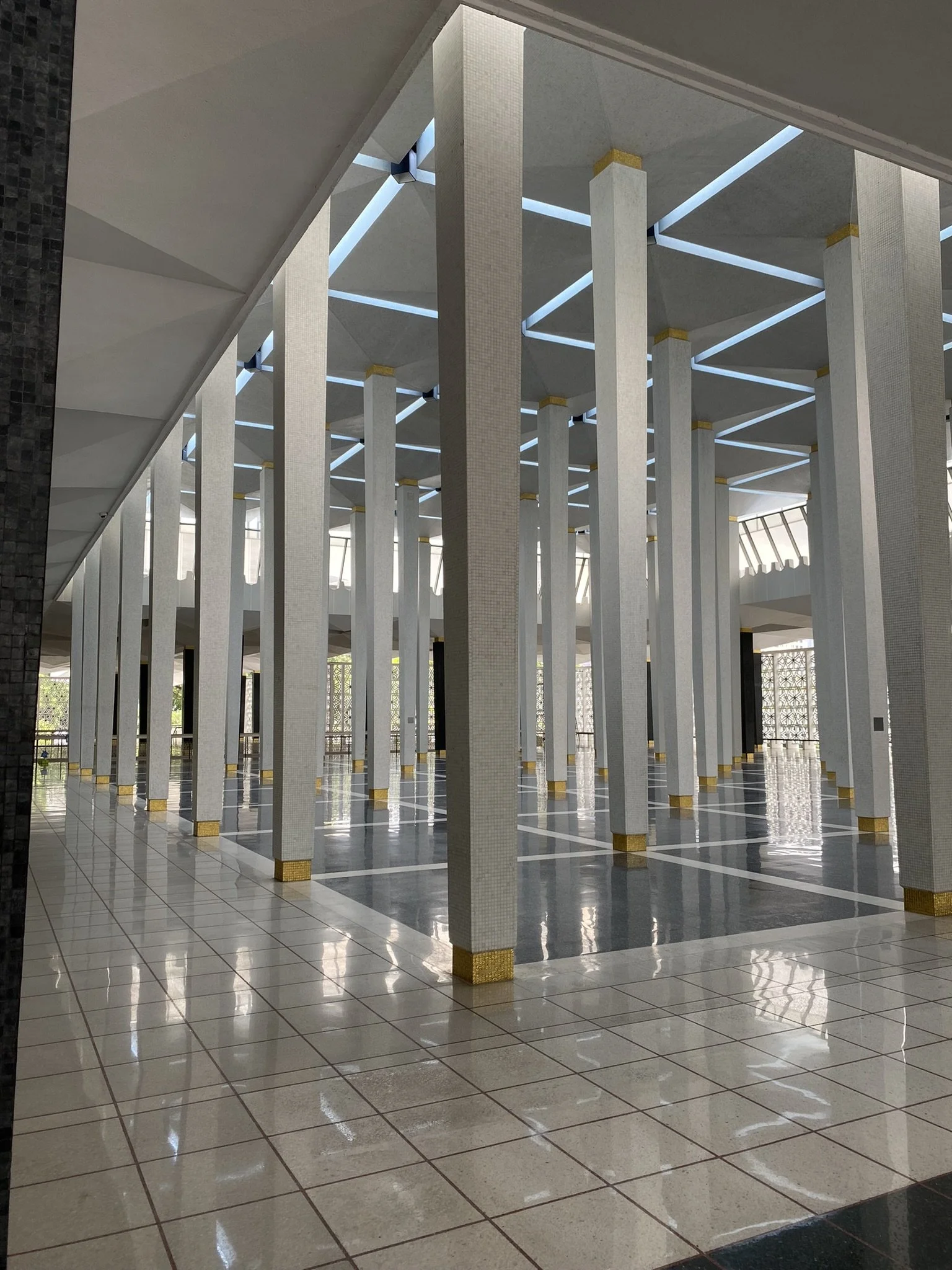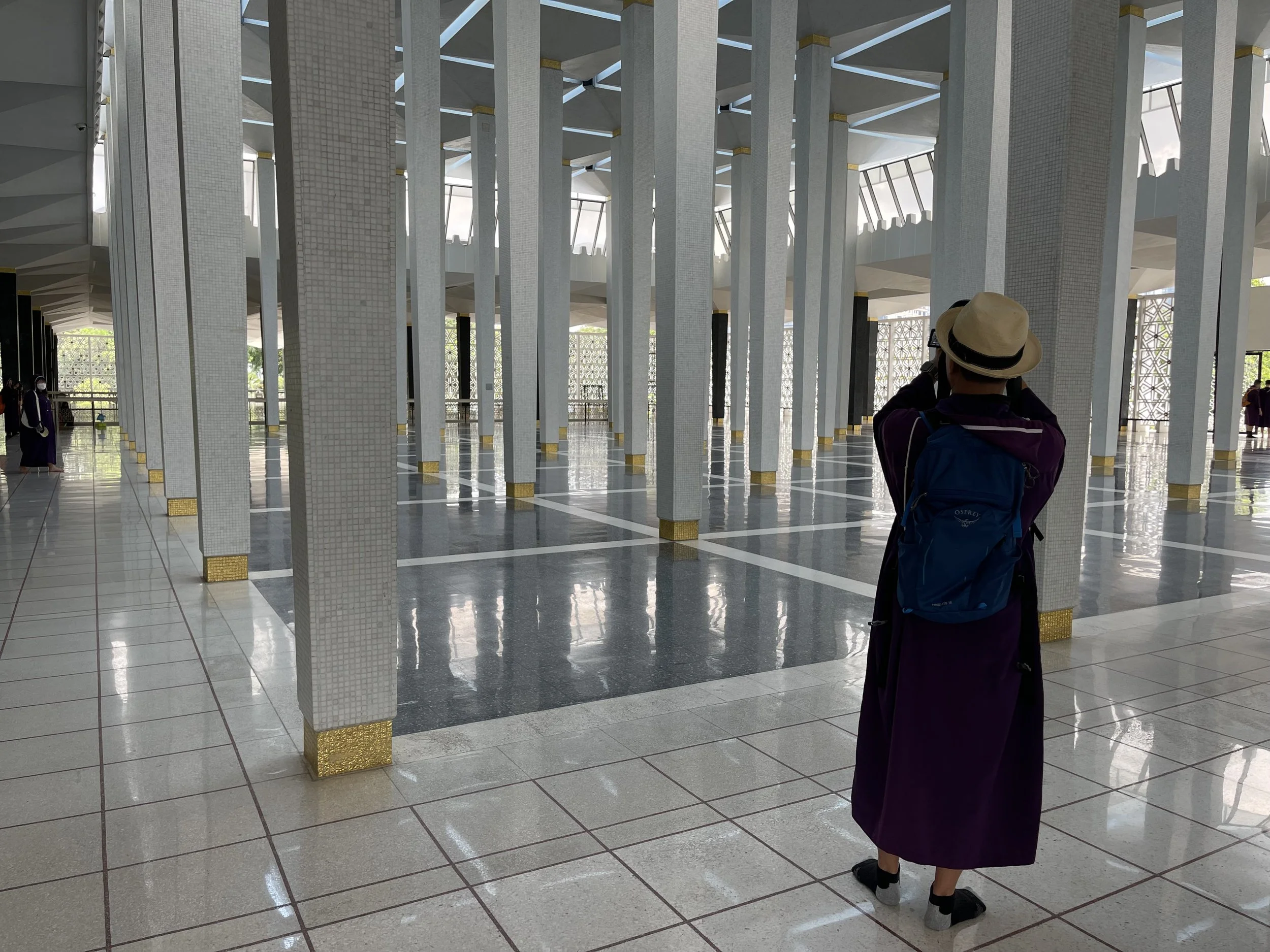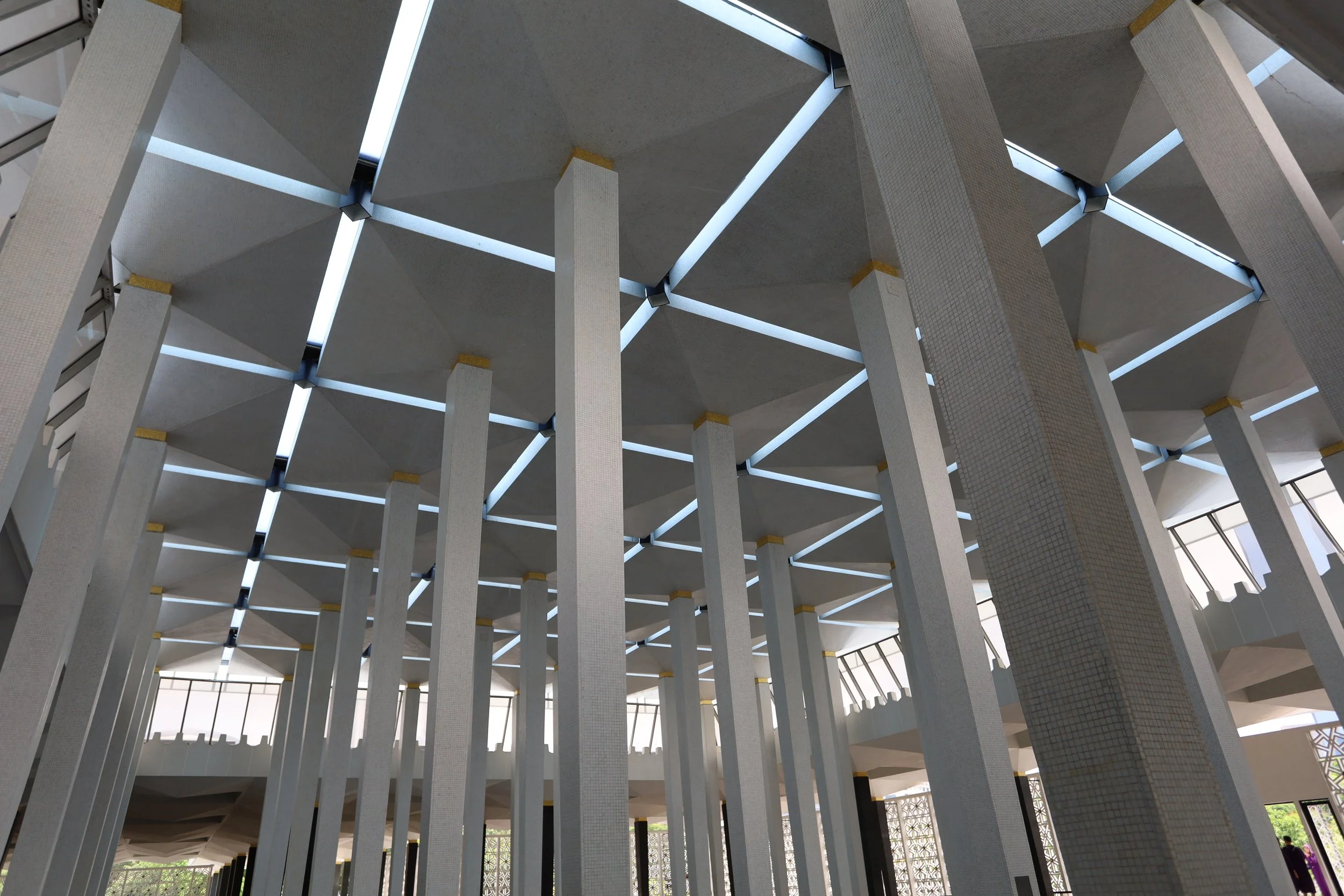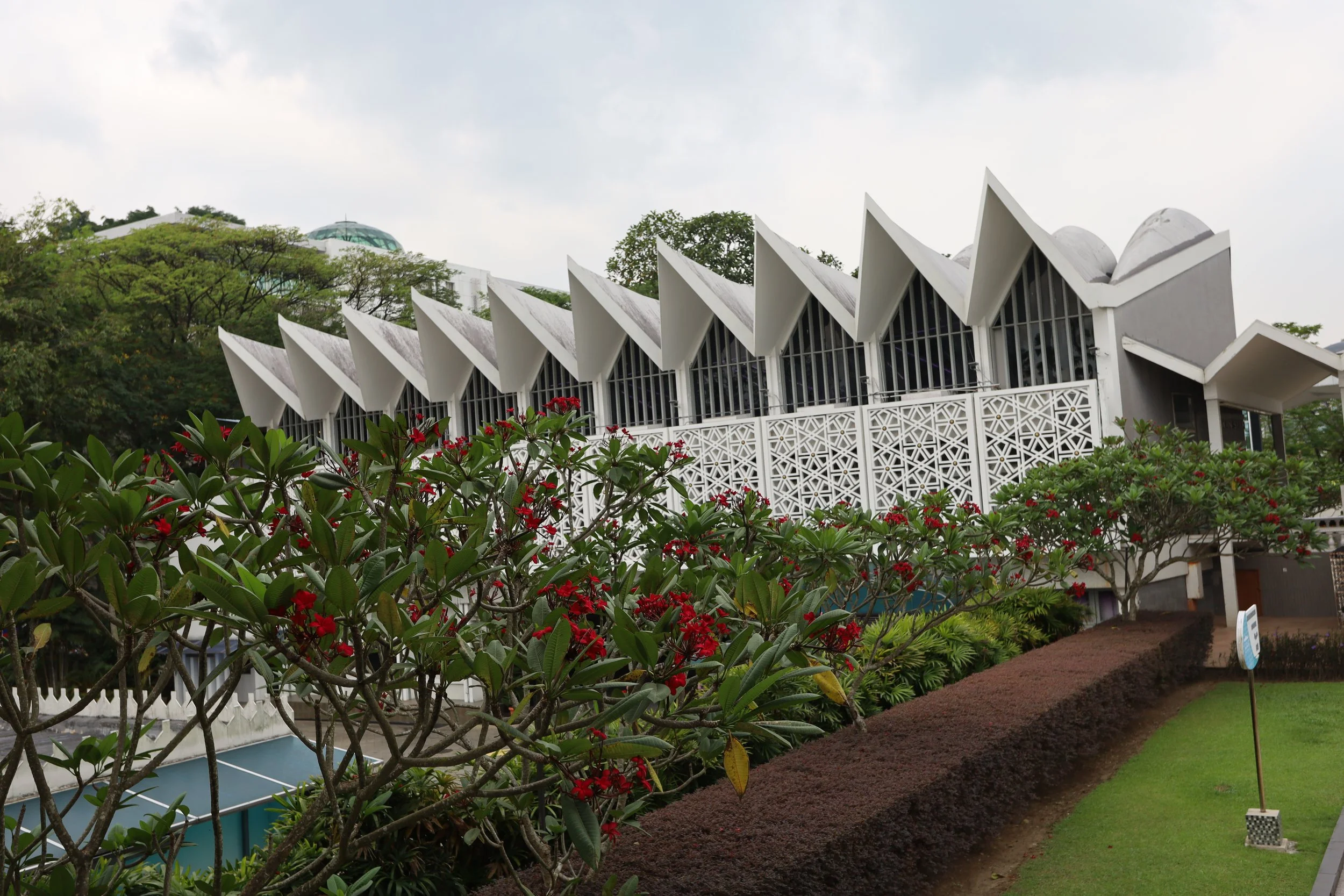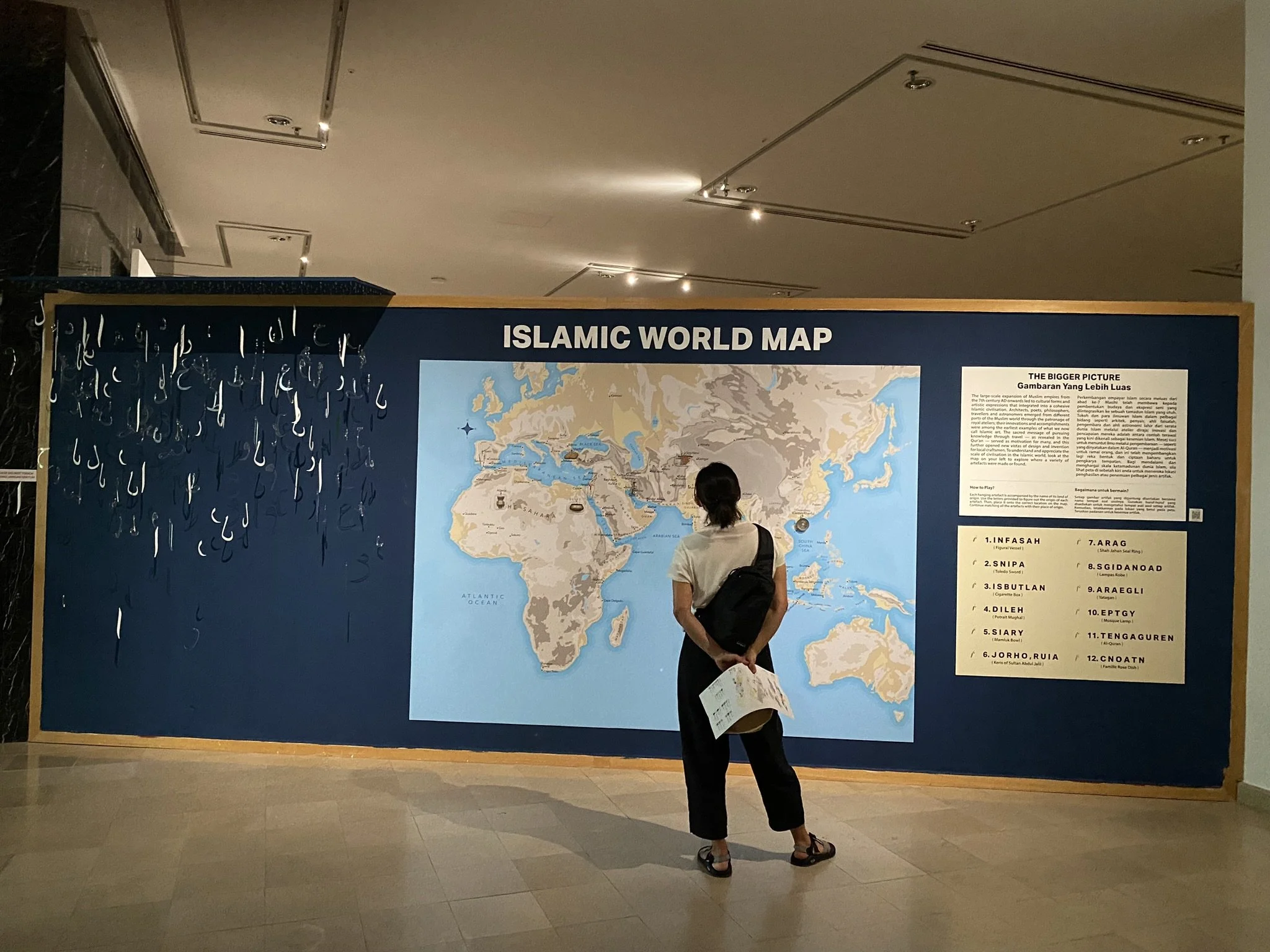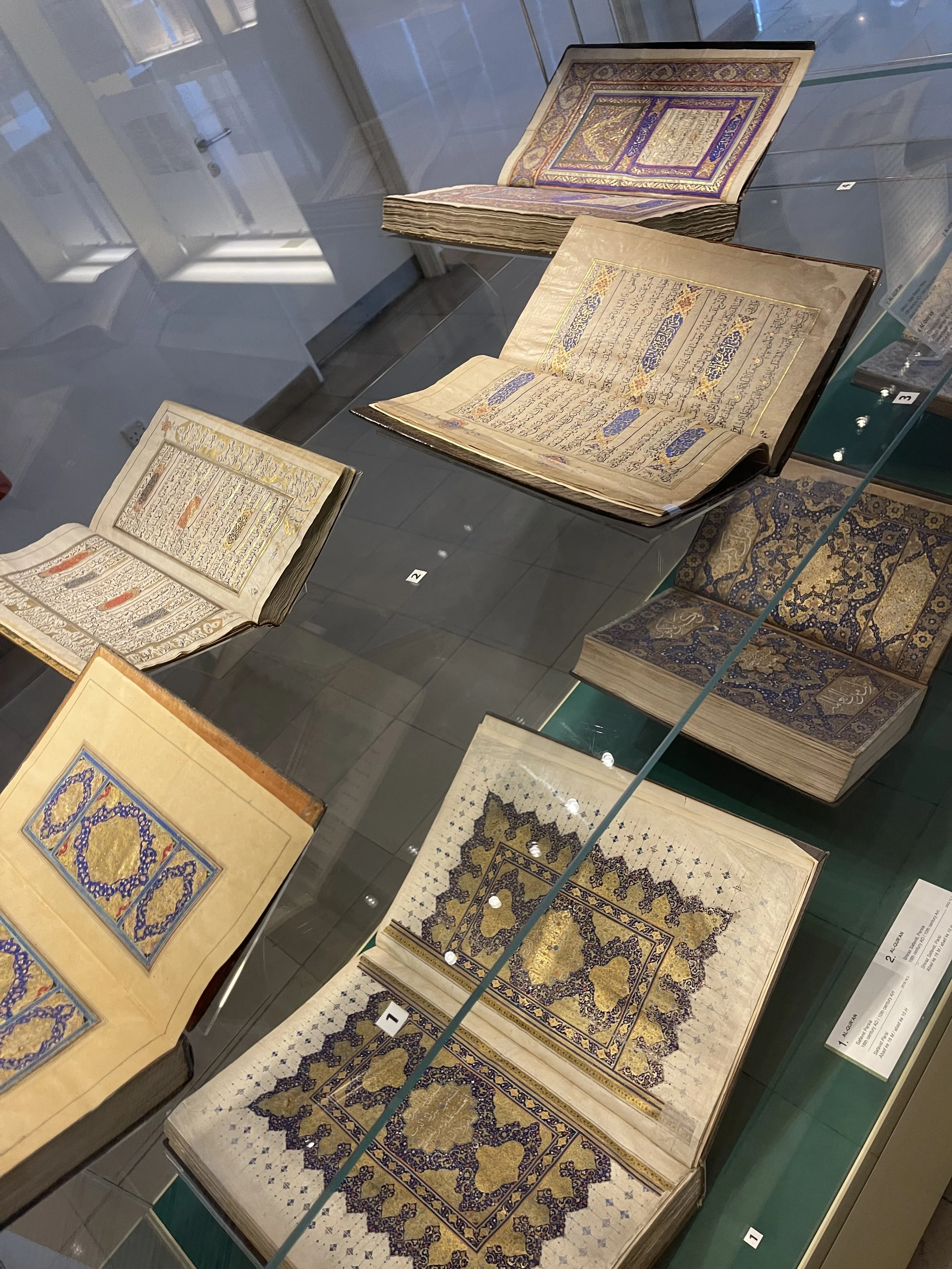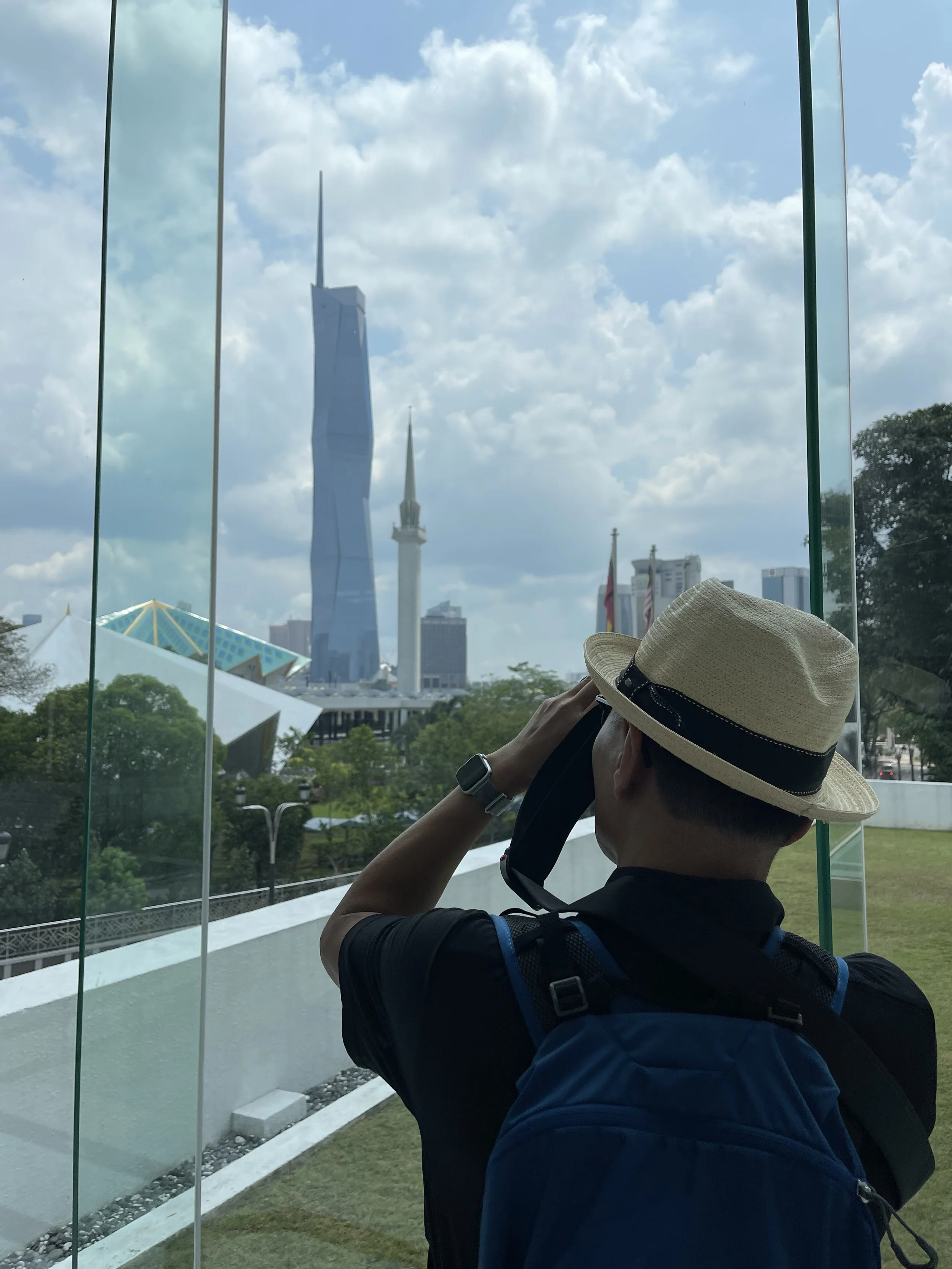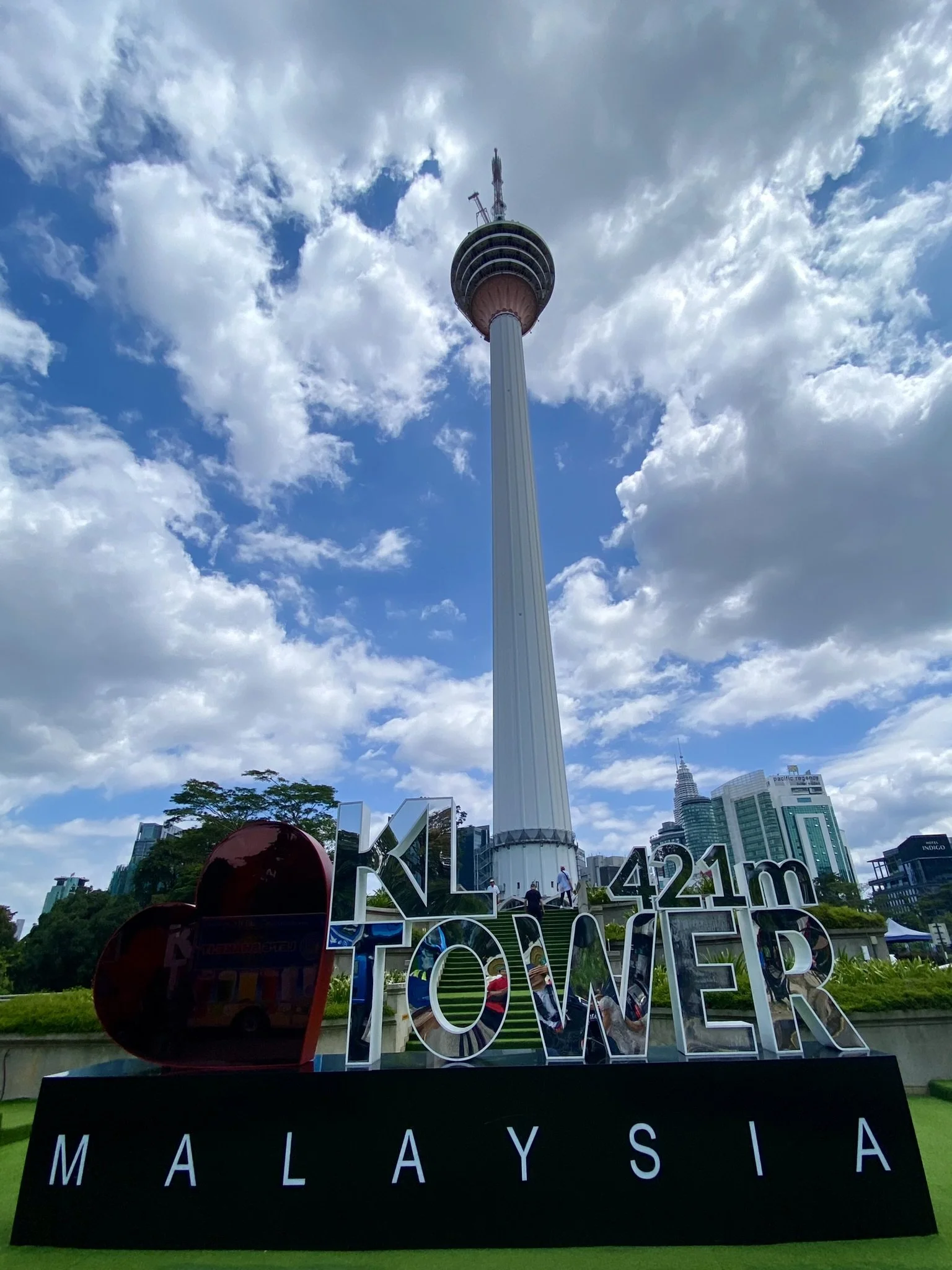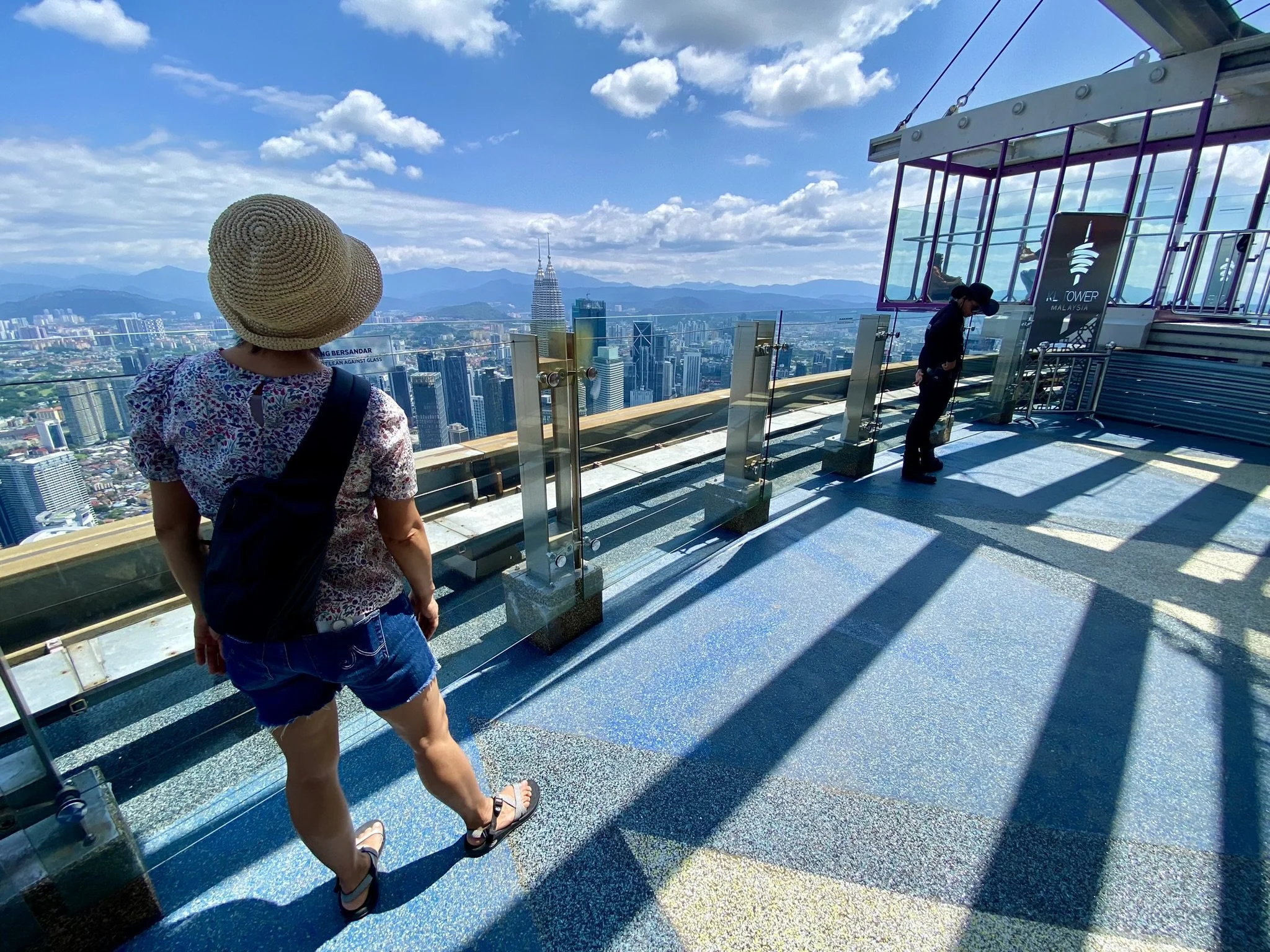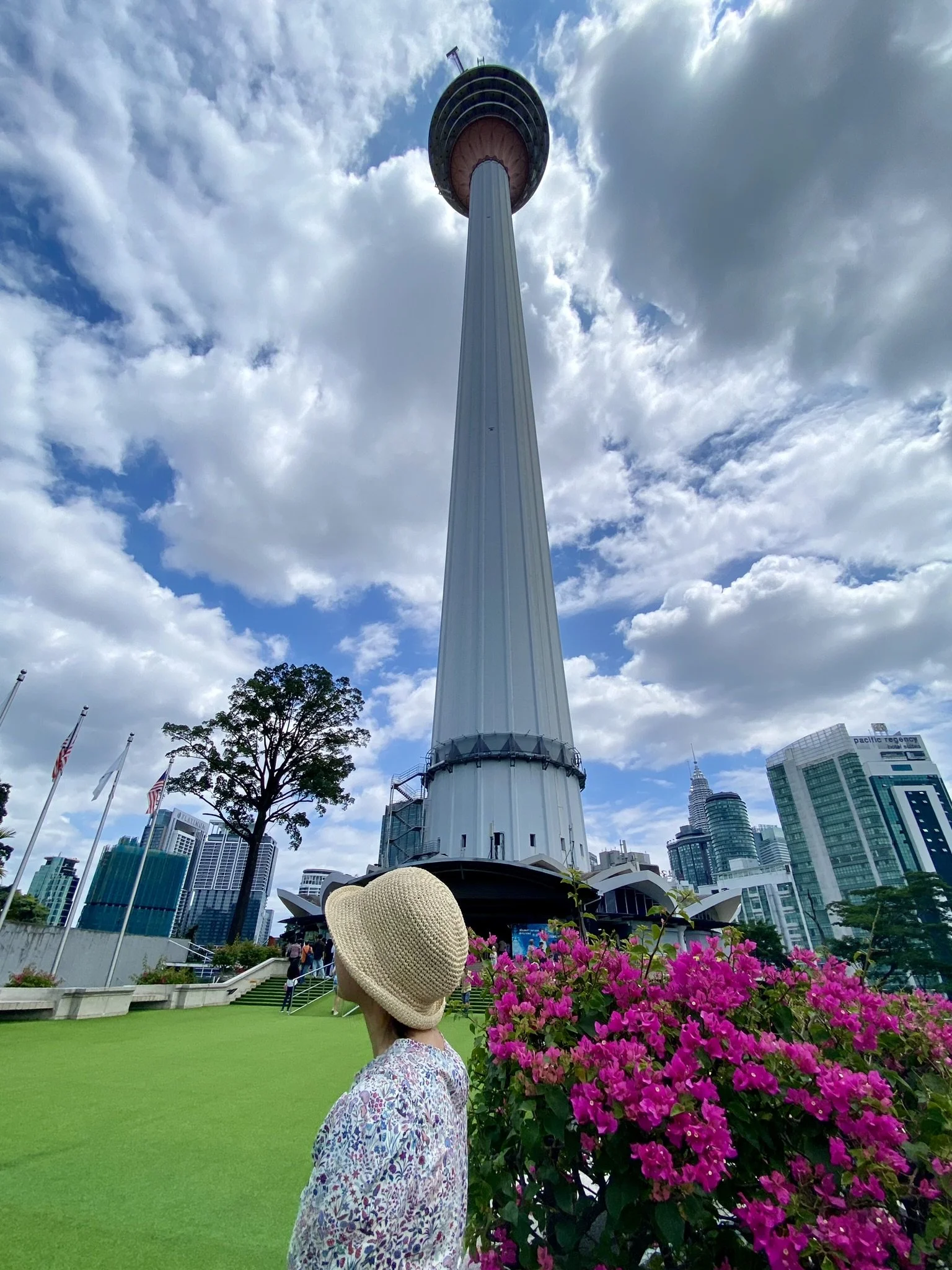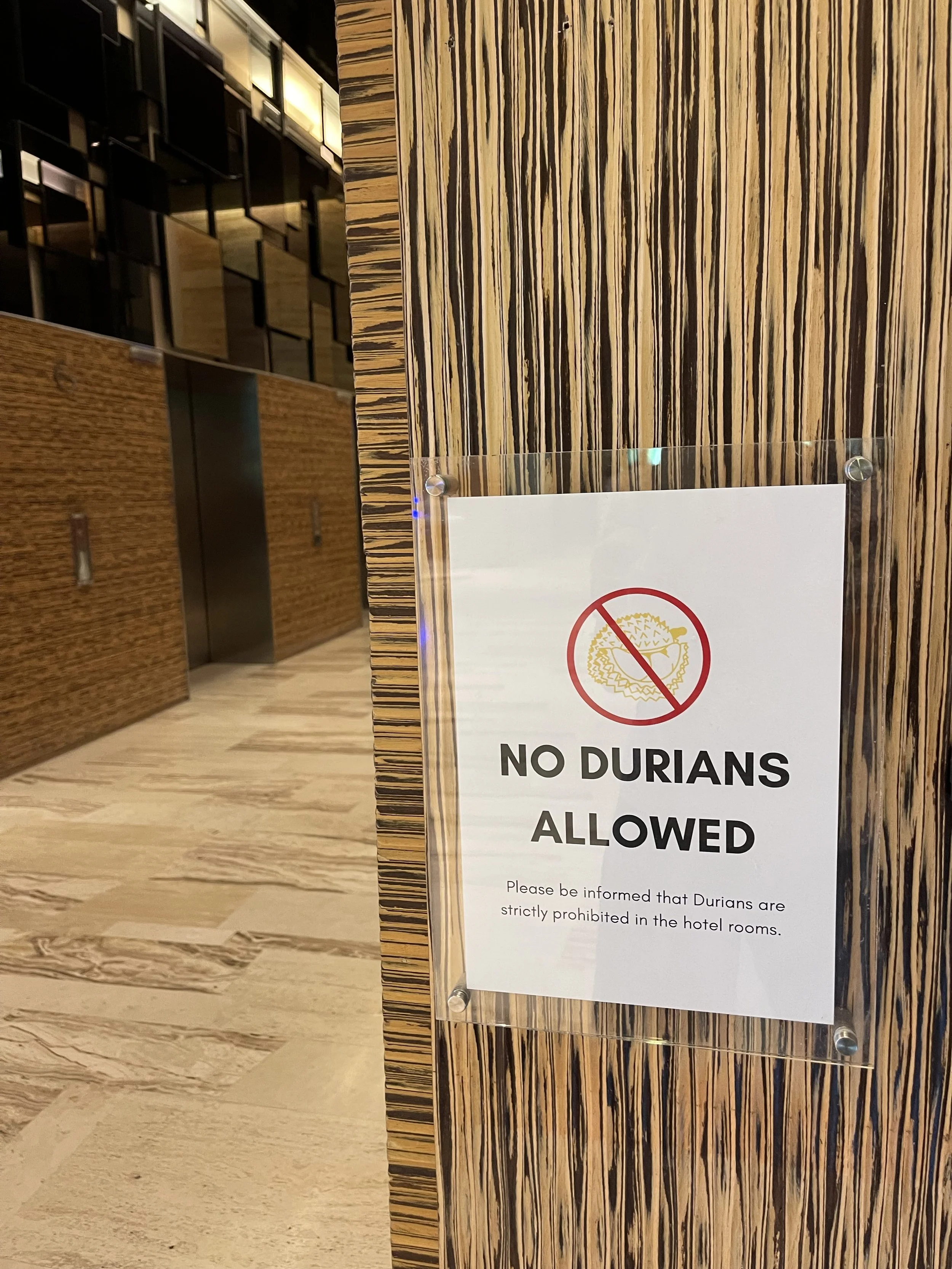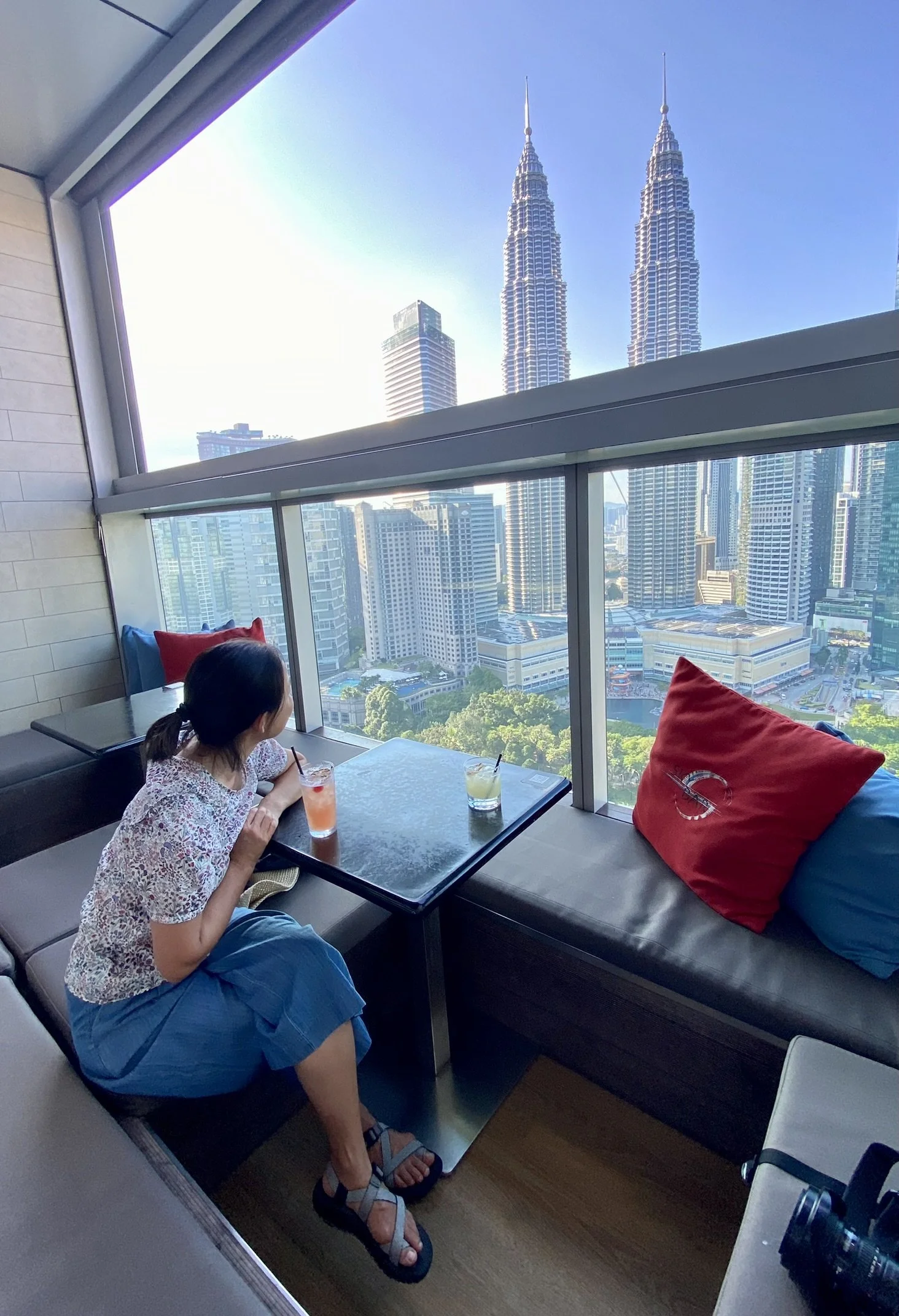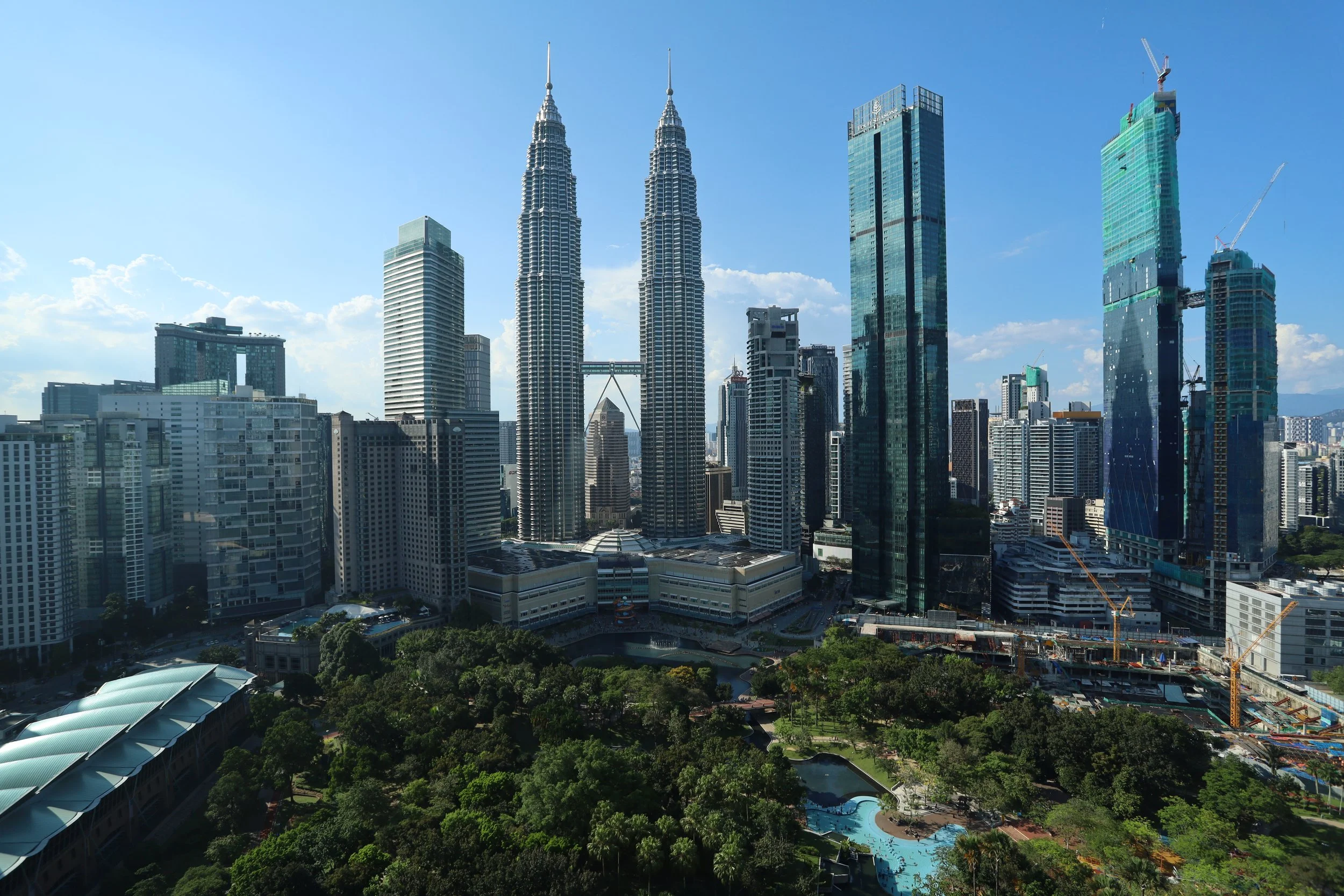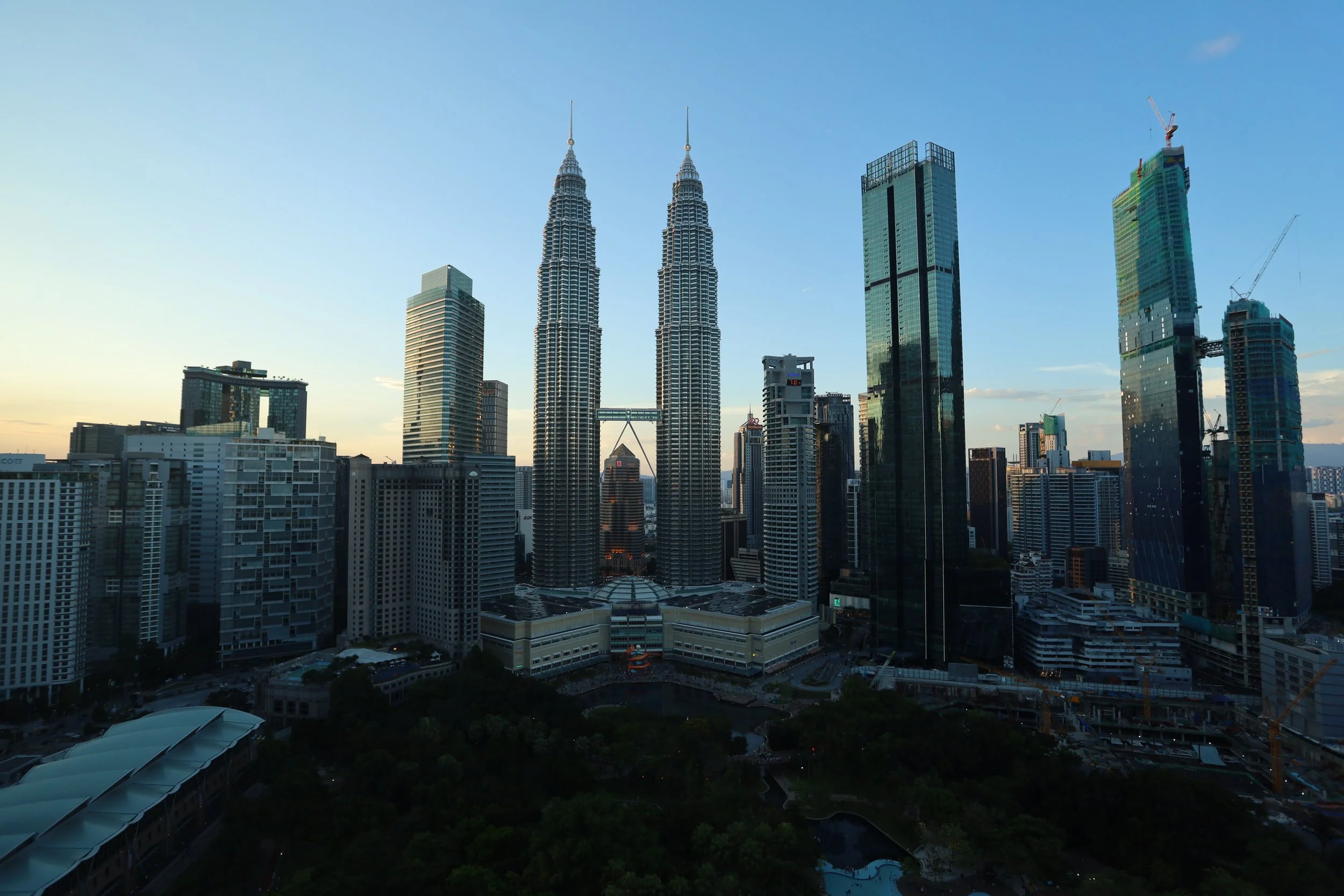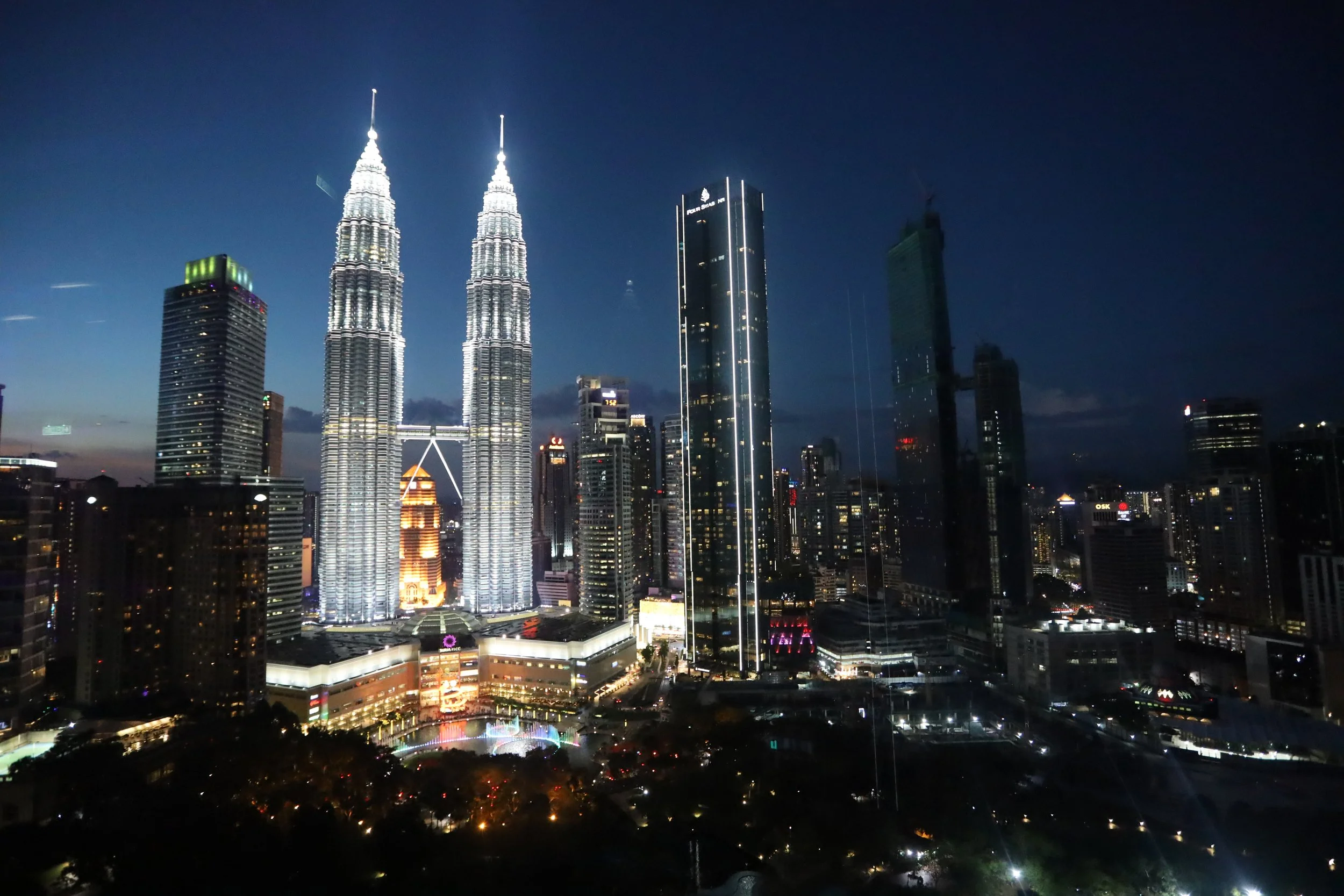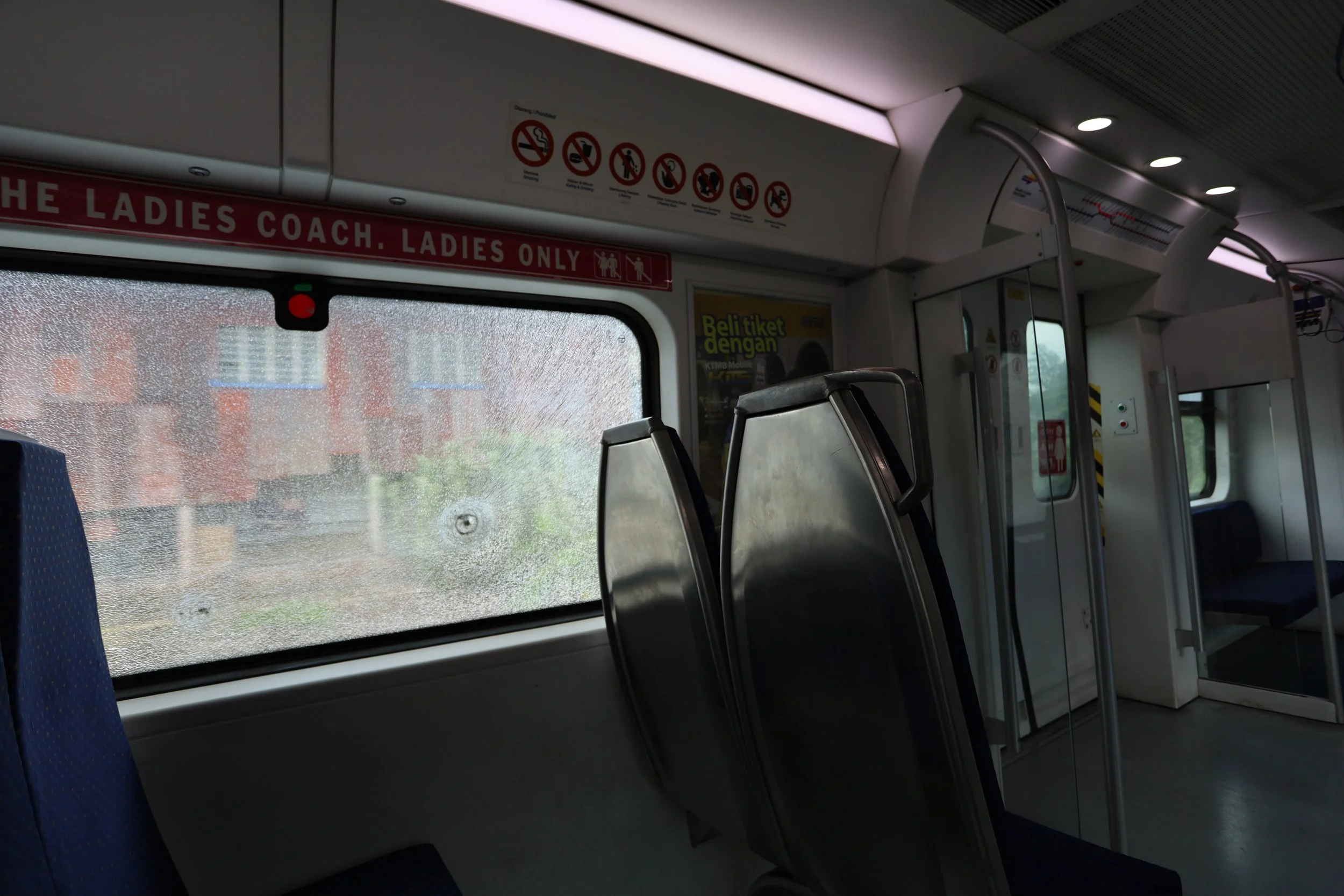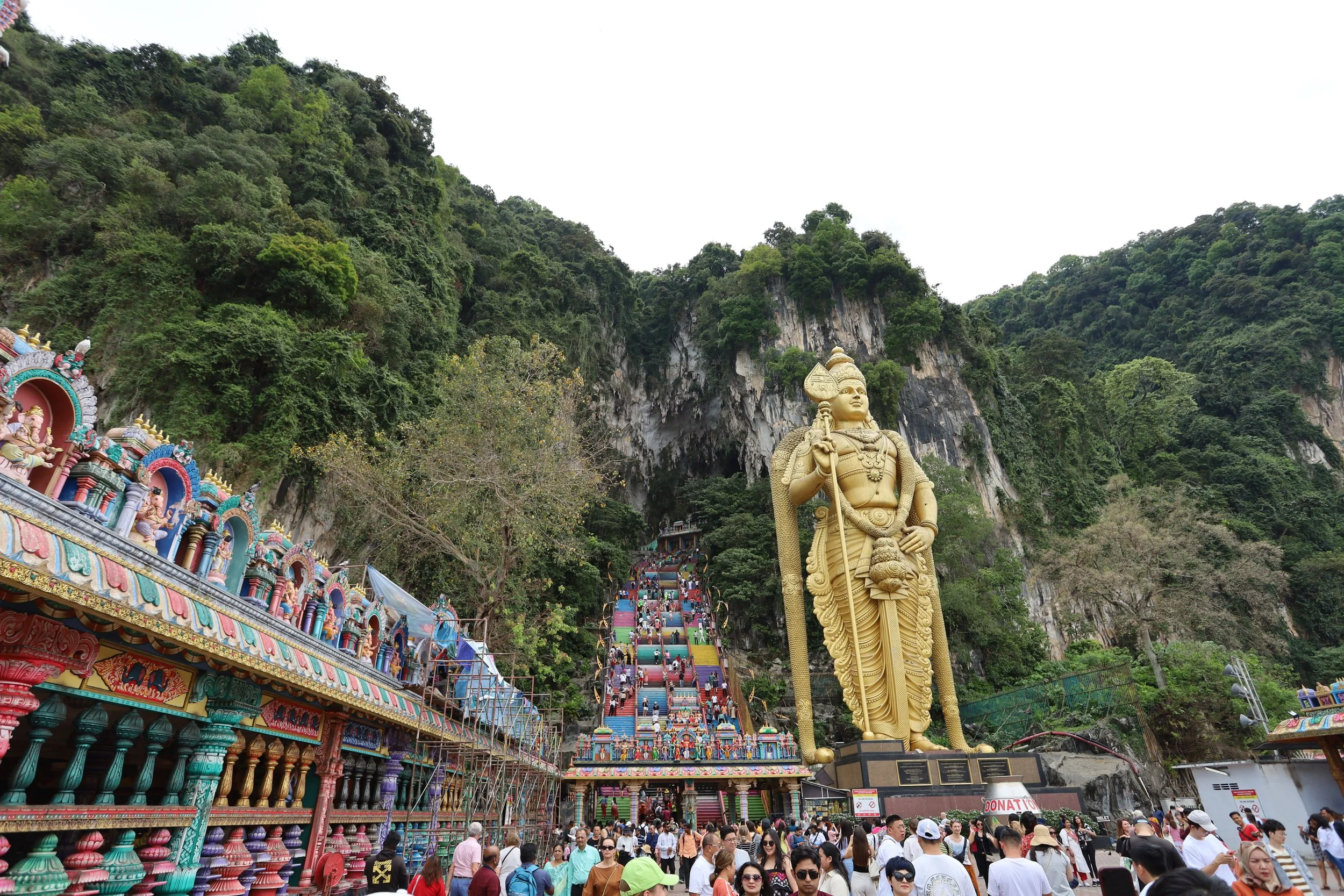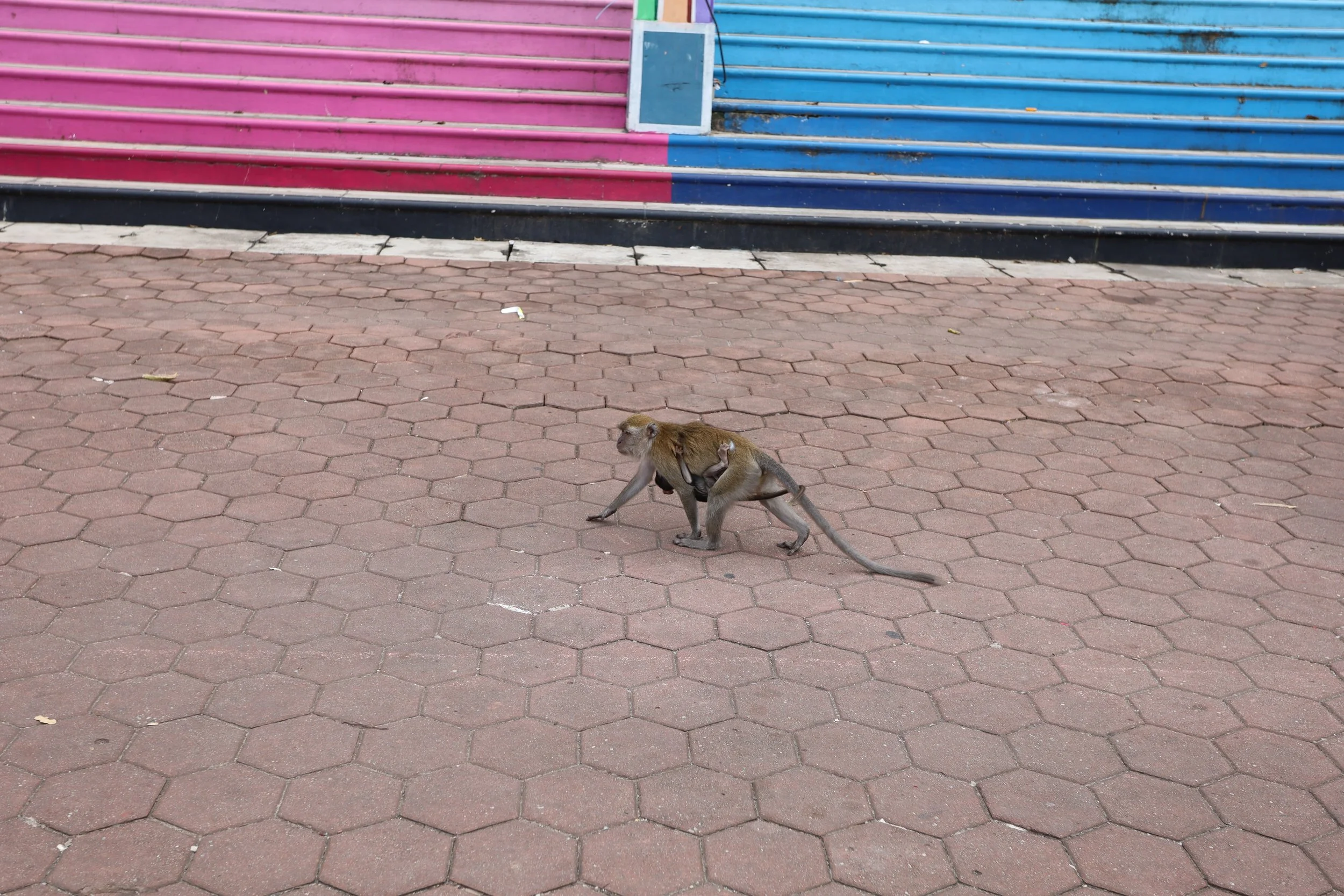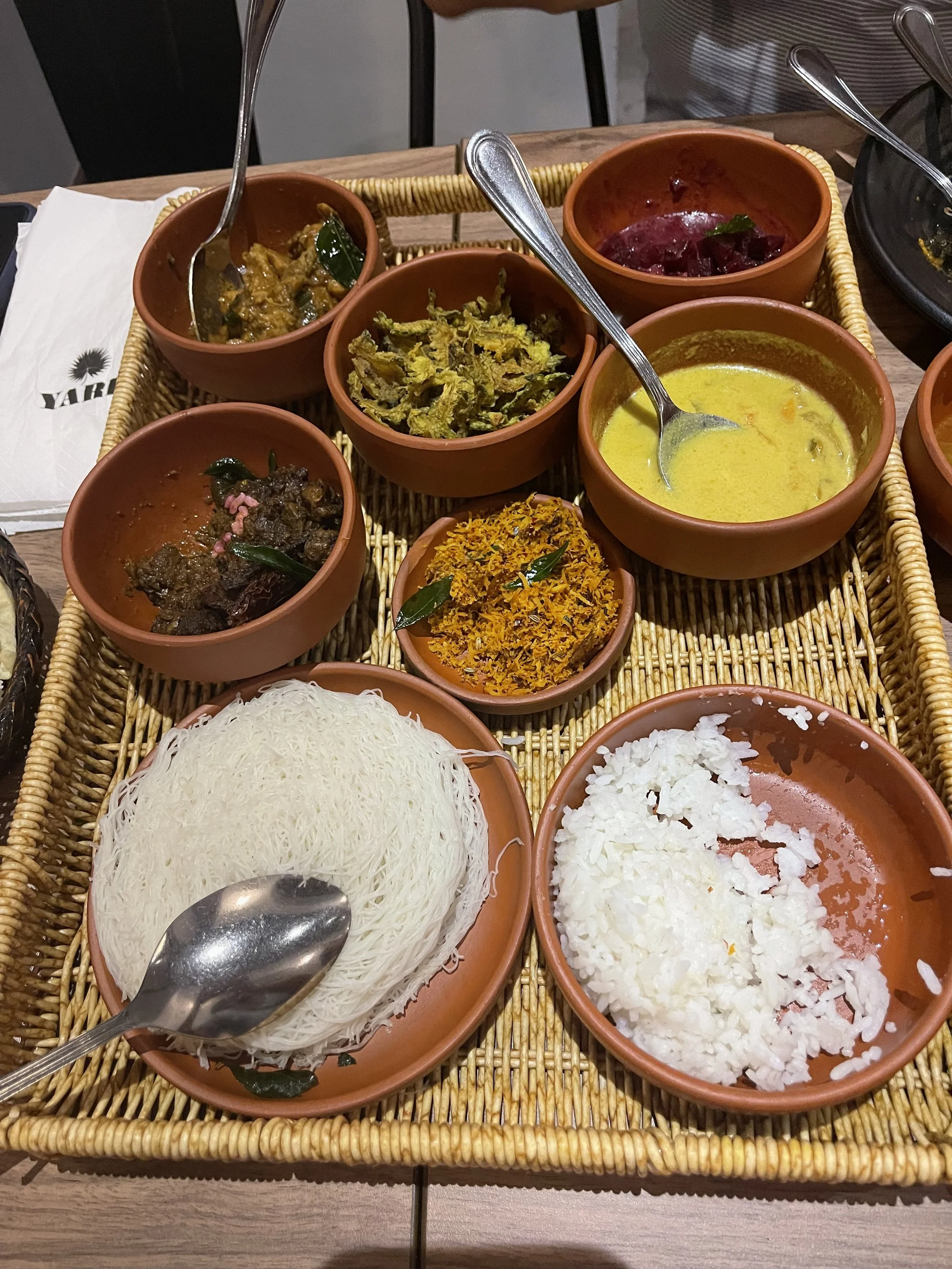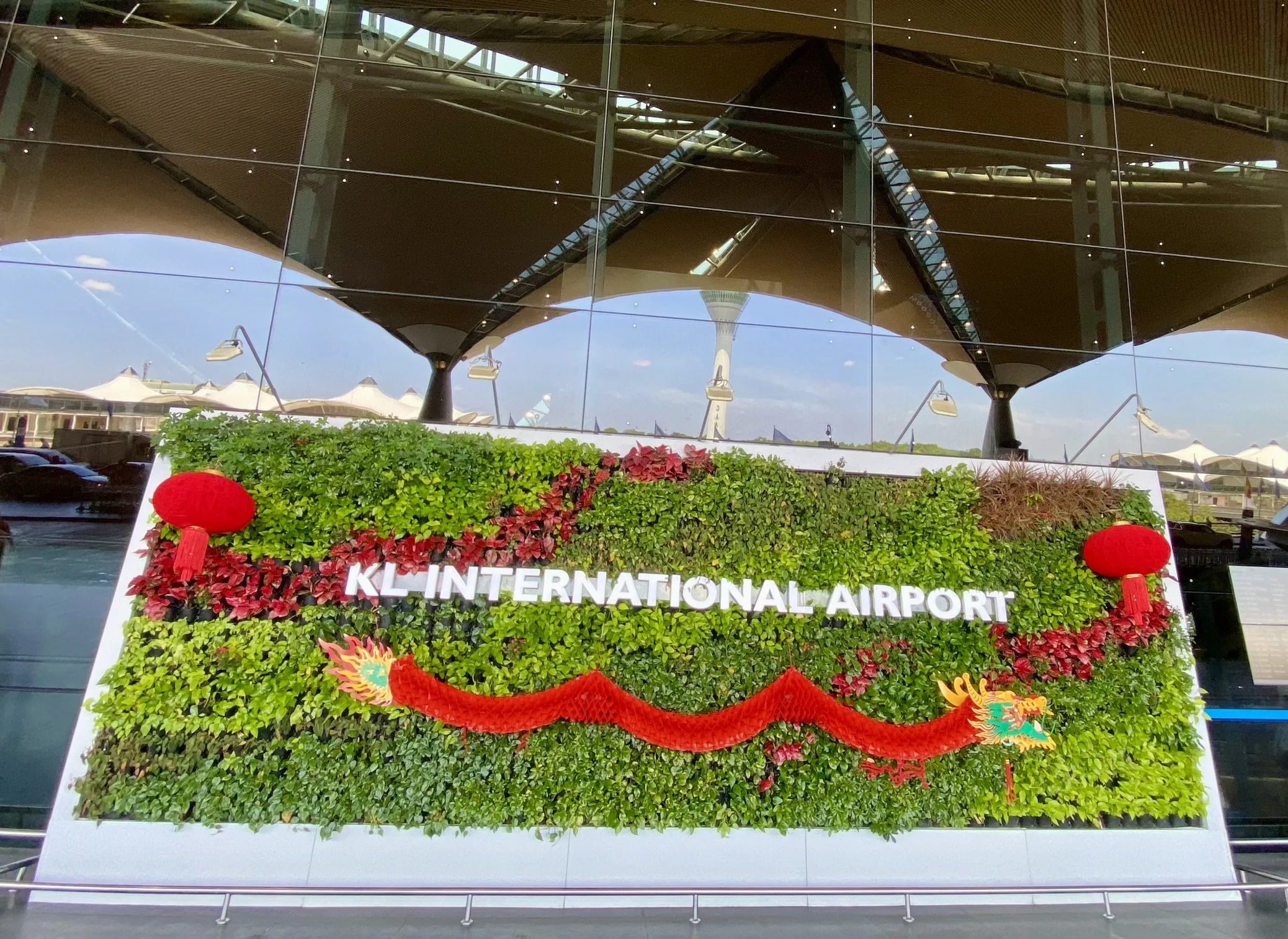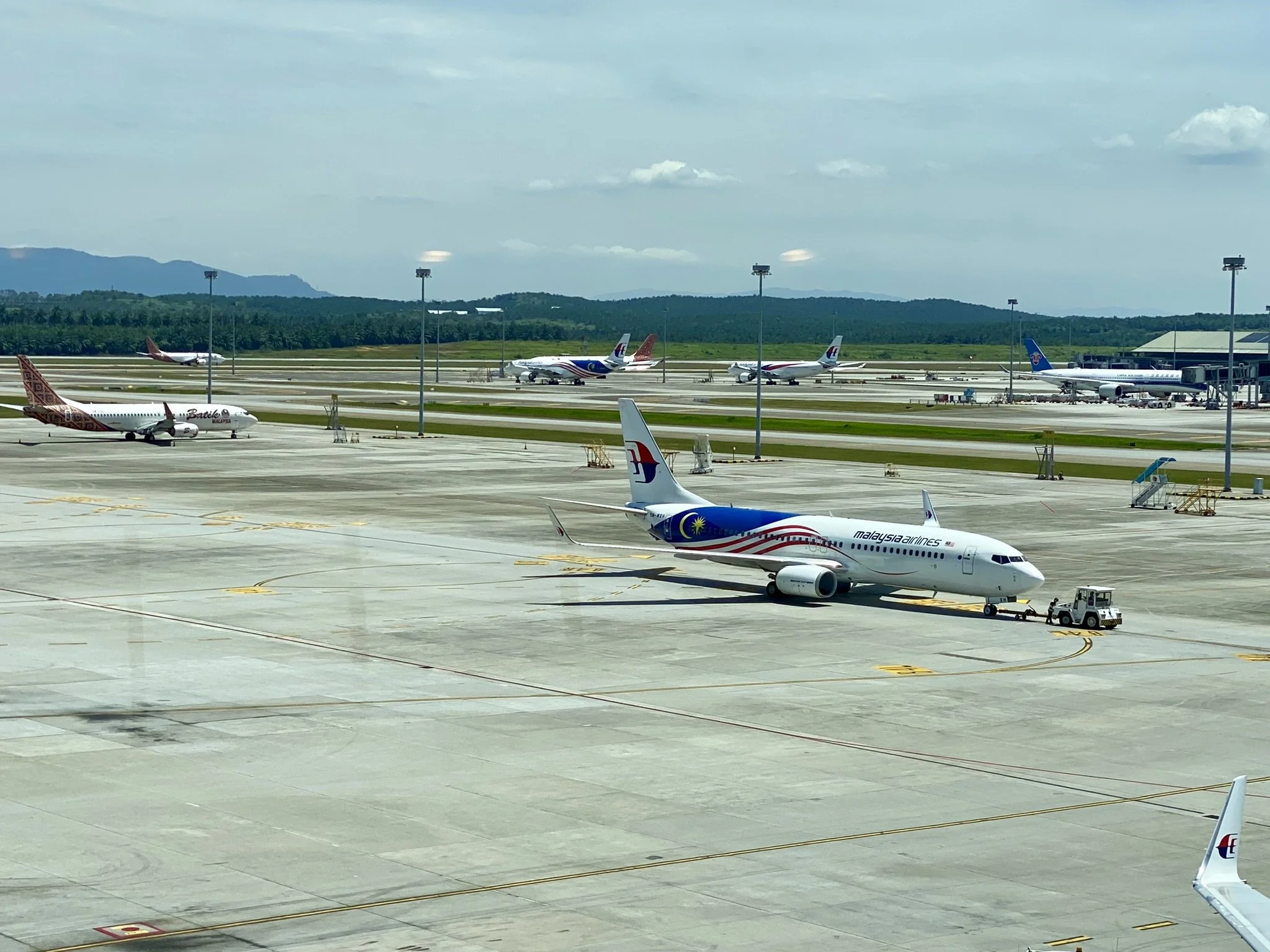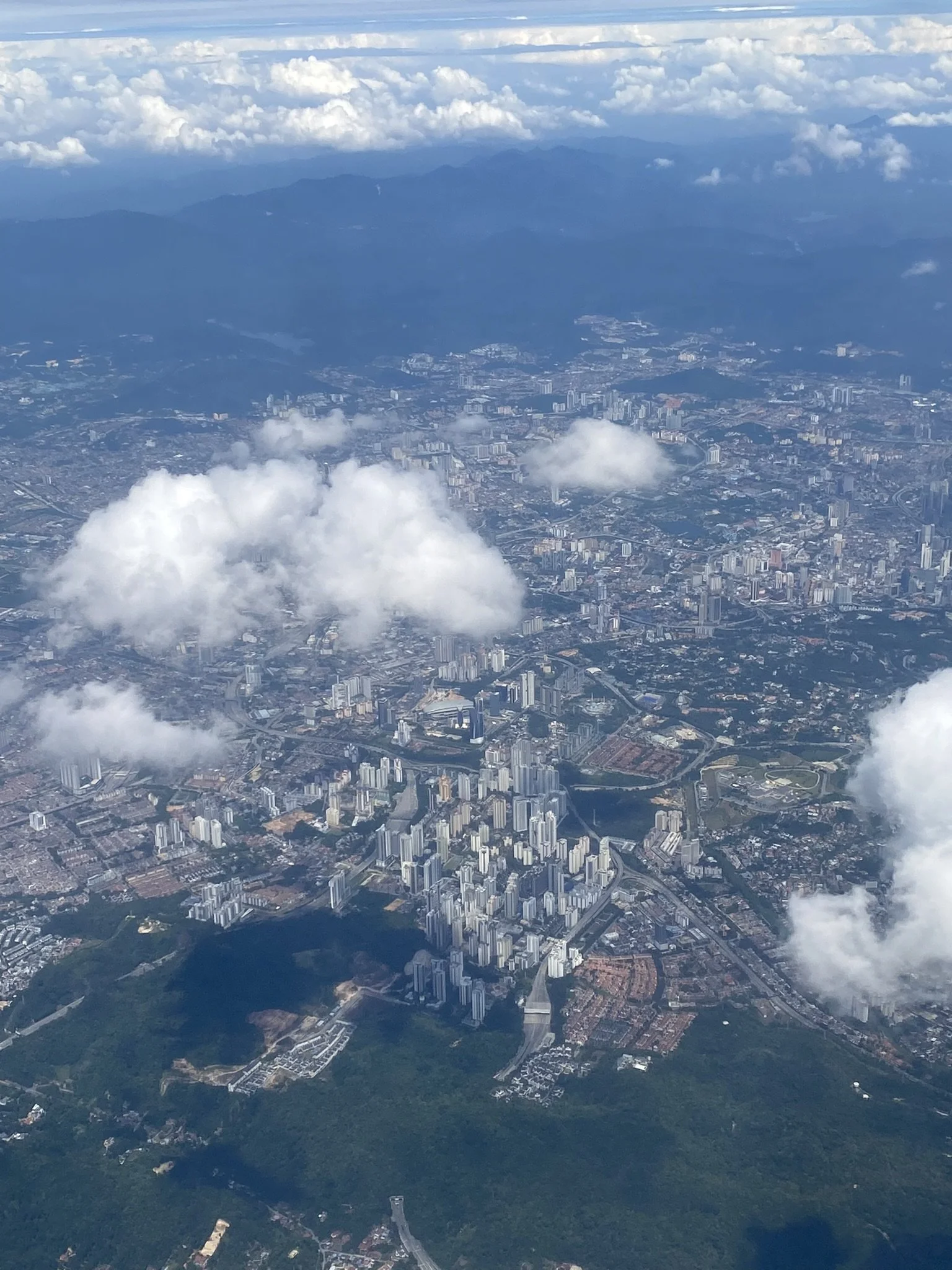Kuala Lumpur, Malaysia
Self-service visas, tall buildings, buckets of sweat
The flight from PUS to GMP was uneventful, but once we arrived in Seoul — our first time in the capital — we had to move fast to make our connection. We picked up our bags from baggage claim and hopped on a taxi. On our way to ICN, we ended up with a chatty driver who asked what I imagine he thought were casual conversational questions — what do you do, where do you live, what’s your pension — but our answers kept inciting more questions. Korean-style interrogation disguised as chit chat.
The flight to Kuala Lumpur was a bit more than six hours. KE flight attendants were polite and professional, but the plane was showing a bit of its age — my God, were we doing the same?!? I watched “Barbie” to see what the fuss was all about, and fell asleep after that. It was not until we were taxing into KUL that one of the flight attendants asked whether we had pre-registered for arrival in Malaysia. Say what?
N. and I ended up walking out of the plane while trying to pick up cell signal and follow directions of airport personnel and security guards to go this way and that — No, go back there to the information desk because there’s a separate entrance for the bus ride to another building for immigration and baggage claim. Got that?
After much back and forth around the shops in the airport — a comedian once called it a “capitalistic obstacle course” — we finally found the right entrance and ended up being the only two passengers on a large bus — it was close to 11 pm local time by now. The driver was too busy on his phone to return our greetings, and we found ourselves unceremoniously deposited in the immigration building, still trying to find out how to fill out the arrival cards. Someone had mentioned that there would be paper forms for us to fill out, but she had been lying — the guard on duty just pointed to a sign with the QR code. Whoever said QR codes would die was so wrong!
We dutifully filled the online forms, got our pictures taken along with our fingerprints, and generally left all kinds of digital cookies in a trove that hackers will likely later steal and sell on the dark web. More relevant to our current situation: by the time we had picked up our luggage and exited through Door 8, the taxi ride N. had reserved for us had left — the drive was required to wait for us for 45 minutes and no longer. We ended up hiring another taxi for USD $50 for the hour long ride to the city center. N. says that he didn’t mind too much since the taxi driver made a big deal about his looking to be only 45 years old.
By the time we arrived at our hotel near downtown Kuala Lumpur, it was 1 am local time, and by the time we unwinded enough to be able to sleep, it was 3 am. Sweet dreams!
***
We were exhausted but made it downstairs to the breakfast buffet before it ended at 10:30 am.
Partly, I nagged N. to eat because I wanted to make sure that we were eating healthy things — veggie omelette, yogurt w honey, toast and lots of fruit — because having to eat out for lunch and dinner every day in a new city did not sound like a healthy thing to do. Mostly, though, I suspect it was because the breakfast buffet was included in the price of our room.
What to do today? The hotel’s front desk was unhelpful and they didn’t tell me anything I didn’t already know from doing a quick internet search, so I became my own concierge and found a walking tour of the city at 2:30 pm.
We decided to walk to the meeting point — a walking tour before the walking tour — but since we still had more than a hour before the meeting time, how difficult could it be to find a cafe on the way? It turned out, most coffee shops were simply open-air ones, and that was definitely no bueno, since the coffee had just been an excuse for air conditioning.
There was no escaping the humidity that brought to mind that sticky feeling of a maple syrup jar in a sketchy diner; the feeling when you remove a label but a thin film of glue won’t come off; the feeling of that dried up oily film on the top of a dirty fridge — that was how walking about Kuala Lumpur city center felt like. We could feel the heat in our bodies literally bringing beads of sweat to the surface — which, in turn, gathered together like workers forming an union, and dripped down our foreheads, our backs, our arms. Resistance was futile.
We arrived at the meeting point and traded travel stories with a young couple from Germany. They had been on the road, around the world, for the last ten months. When I asked what had been their favorite place, they answered unhesitatingly, “Namibia!” N. gave me a look as if to say, “See? We need to go to Africa!” I gave him a look that said, “No, I don’t want to go to Africa!” After 34 years of marriage, we can carry entire conversations with just our eyes.
Hakim The Tour Guide arrived with cold bottles of water (a kind gesture), an easy smile and fairly understandable English — until he mentioned that he had lived in Scotland for a few years, which instantly made me remember Robin Williams’ “invention of golf routine,” (look it up) and then I magically lost the ability to understand Hakim. But he was friendly and worked hard to connect with people in the group — between his soliloquies at one local landmark or another, he approached everyone and asked, “So, what’s your story?”
There was another couple from Germany (on the road for 7 months), another single traveler from Germany who was of Cantonese descent, a solo from Switzerland, a solo from Quebec (on the road for 10 months). Question: with all these young people traveling for so long, who is left to work in their respective countries?
***
Thank heavens for small mercies: the National Museum of Malaysia (Muzium Negara) had its own subway stop, so from the AC in the subway, we walked straight into the AC of the museum.
The exhibits were spread out in four different galleries, which presented Malaysia’s pre-history and history in chronological order.
Things I learned at the museum:
there was a time before the continents shifted when what is currently Malaysia, Sumatra, Borneo and other Indonesian islands were one large landmass; even after the land masses began to move during the ice age, what are now islands used to have connected landmass highways, leading to the migration of large animals like the rhinoceroses in places like Borneo (One of the best general science books I’ve ever read: The Song of the Dodo: Island Biogeography in an Age of Extinction by David Quammen.)
different tribes in the area eventually developed into different kingdoms such as the Sabah, Sarawak, Malacca
the conversion of important leaders to Islam led to the spread of Islam in the region, equivalent to Emperor Constantine’s conversion to Christianity in the 300’s CE
the Portuguese and the Dutch colonized Malaysia during the 16th century Age of Explorers
trading wealth brought the English and their colonial imperialism
post-World War II, ethnic Malays, Indians and Chinese united to call for independence from the British; it was achieved in 1957 (America is not the only ‘melting pot’)
“Merdeka” means “independence” in Malay
Singapore, originally part of Malaysia, declared independence in 1964 — leaders in Malaysia did not want to fight that political group in a civil war and so allowed them to secede
We also had interesting food adventures — Indian banana leaf veggie meal, spicy crab and chicken tandori; tea on a rooftop, high above the chaos of the city; soy custard for dessert from a food cart; dinner at a traditional Malay bistro. N. finally got his first beer — not easy to find in a predominantly Muslim country — at a bar close to our hotel that confusingly also sold pet snacks.
***
In planning for the day’s destinations, something weird was happening with that navigation app that begins with the letter “G”. When I typed today’s first stop, it gave me suggestions on how to walk there from our current location (30 minutes) or to get on the subway and hop off after a single stop and then walk another 24 minutes. What it didn’t suggest is the subway stop closest to our destination. I sometimes suspect that the algorithm writers get bored and throw some random code to just mess with its users from time to time. After using our own big brains to decide how to get there, off we were. Today’s destination: the Islamic Arts Museum Malaysia.
Just for the record: the public transportation system in KL seems to work just fine, but it has its quirks. From what we gather, there are several different lines of buses, subway and suburban train systems, but many of them require different payment systems — there is no one single fare card that works across all of them. What that means on the ground is that we have to either get multiple cards for payment (for example, one for the subway and another for the buses) OR we have to get individual tokens for each trip. Hakim the Tour Guide mentioned that a more effective system was being held back by lack of computer chips available in Malaysia.
But where was I? Ah, the Islamic Arts Museum.
In order to get there, we had to walk by the National Mosque of Malaysia. And wouldn’t you know it? I had ruled out visiting it because, again, that navigation app had listed it as being closed today — but that was not the case. We saw quite a few people walking about the grounds, and so we ventured in.
There was no entrance fee, but we were required to wear purple robes since our clothing did not meet the required dress code — N. was wearing shorts and I had no head scarf. So we were given thick and long purple robes — when were these last washed, I wondered — and left our shoes on tall metal racks by the entrance.
Visitors were guided simply around the outside grounds, which were mostly empty — no prayers on an early Saturday afternoon. Looking up, we were treated to contrasts between the tall minarets of the mosque and the Merdeka 118 skyscraper.
We were able to take a peek into the Main Prayer Hall, where a friendly docent offered to take our pictures and shared some interesting facts about the mosque.
during the 2nd prayer on Fridays, all men were required to be at a mosque (women could offer their prayers wherever it was convenient)
on this particular mosque, an archway entrance marked the direction toward Mecca; we could quickly see that the lines of the carpet indicated where worshippers would line up in an orderly manner facing the appropriate direction.
the main prayer hall accommodated 3,000 worshippers; another 12,000 could be on the outside “porches” (also lined) during high holy days
We thanked the docent for her friendly information and headed up the hill to the Islamic Arts Museum Malaysia.
The museum had numerous artifacts from calligraphy samples, prayer books, metalwork, pottery, textiles, but I would be lying if I didn’t say that the most beautiful thing in the place was the icy air conditioning.
I was able to convince N. to have lunch at a vegan restaurant. We had the “fried chicken” made of trumpet mushrooms, a “burger” of soybeans, and a “nasi lemak” made of caulifower. I watched a vegan British stand up comedian once confess that vegan food is terrible, especially when it tries to pretend to be a meat-based dish — he was right.
***
Miraculously we arrived at the KL Tower before the mad crowds. We purchased our tickets, took the elevator up and found ourselves with a 360 degree birds’ eye view of Kuala Lumpur.
From our vantage point, the most impressive view was of the Merdeka 118 building. From high up, I could see all the construction supplies and machinery still strewn around it — and that’s when I remembered something that Hakim our walking tour guide mentioned.
Merdeka 118 is the second tallest building the world. I had thought that it had been THE tallest at one point, until it was surpassed by the Burj Khalifa. But that’s not the right order. Merdeka 118 is just now being finished. Hakim had asked, if you are building a tall building — knowing the height of the tallest one — and using an antenna to make it the second tallest building in the world, why not just put in an even taller antenna to officially make it the tallest in the world? Good question. For the record, the Burj Khalifa is 828 meters tall; Merdeka is 678.9 meters tall. Still, it’s an impressive engineering feat.
After a traditional Malaysian lunch, we headed to the sky bar at a downtown hotel, not because the building itself was of note, but because of the views outside its windows. (The hotel did have a sign warning guests that durians were prohibited in the rooms.) Because the sky bar also doubled as the pool area, it was hot and humid, but the views from the windows made up for the heat.
We stayed for the sunset and stuck around until the Petronas Towers shone like diamonds in the dark night.
***
N. and I considered our plans for today. The hot and humid weather (typical day: highs in the mid-90’s, feeling more like the mid 100’s) had me seriously considering doing nothing today but staying in our air-conditioned hotel room. On the other hand, we were in a new city and wanted to see as many of the things that made it special as we could. N. put it this way: it’s better to go and regret it than to not go at all and suffer FOMO.
Well, his assessment was put to the test.
We walked to a different train station from our usual route on the LRT red line and found ourselves in the KTM suburban train line to Batu Caves. The man at the ticket counter had told us to wait in platform 2, but as we waited for the train to arrive, we were confused by a very fast train that passed us by — in the wrong direction, from left to right. Were we in the wrong platform? I kept looking at the map, at the signs, and the only conclusion I could come to was that if our train were to stop on our platform, it would have to be going the opposite way of that speed train, from right to left. And lo and behold, our train arrived, in the direction I had guessed. And that seemed like a disaster waiting to happen.
The train was mostly empty and mercifully cool, and the ride to the Batu Caves was only about 25 minutes. (Near our seat, one of the windows did have a cracked glass radiating from what seemed like a bullet, but I tried to imagine alternatives. The train finally stopped by the gates of the temple grounds at the Batu Caves and as soon as we entered the gates, both N. and I were frozen in shock by many things.
Shocked by the colorful gigantic figures of what I could only guess was a Hindu god with a monkey snout; by a large eagle that seemed very American; by the large golden goddess next to colorful steps leading high into what I imagined were the caves. I say “imagined” because we were not allowed to go up the steps with our knees showing. Luckily — duh — there was a stand close by selling large rectangles of fabric for MR 15. I declined. But it was not these things that caught our attention the most.
What was truly horrifying was the sight of monkeys all over the place, obviously inured to the presence of humans who were buying fruit and snacks from the vendors on the grounds to give to the animals. We saw monkeys fighting over food, one grabbing a banana thrown by a visitor, and another walking around holding a Haagen Daz ice cream.
And the birds — Alfred Hitchkock, anyone? — thousands of them, nesting on the trees, flying like jet fighters between people, pecking at any food stuff they saw and pooping everywhere (and many devout visitors walking barefoot amid all that poop.) It was literally my worst nightmare — I have feather phobia and have known to whimper and cry and wake up screaming when I dream of birds.
I’m not sure what was more horrible — seeing the animals run amok, or the humans who caused their behavior because they wanted a few selfies with monkeys and birds.
We left the grounds after no more than 10 minutes, and it took another couple of hours to delete the horrid feeling of that visit.
Back in town, we nursed our shock with lunch and boozy ice cream, and so ended our Malaysian adventures.
***

